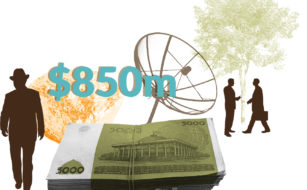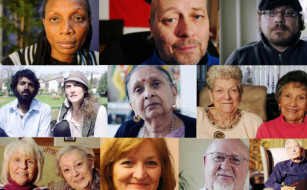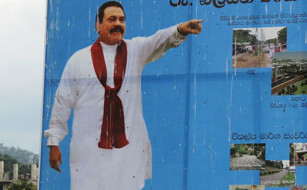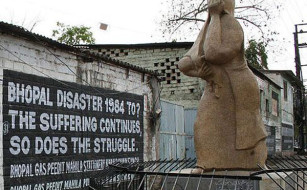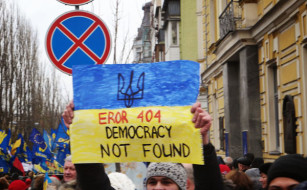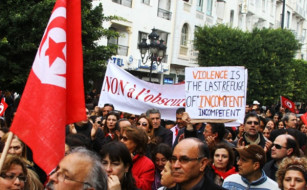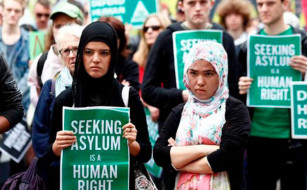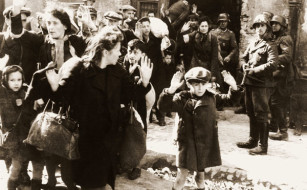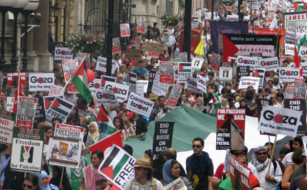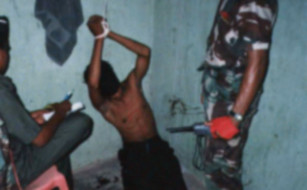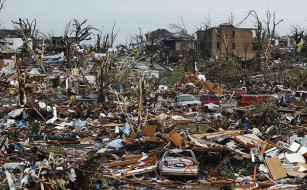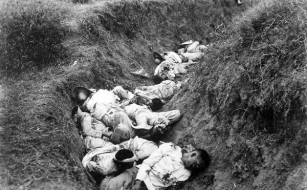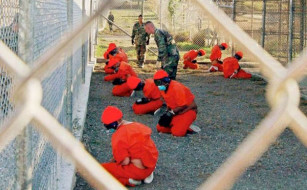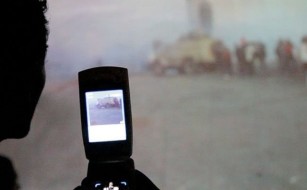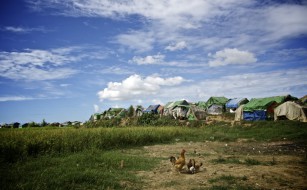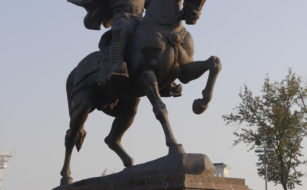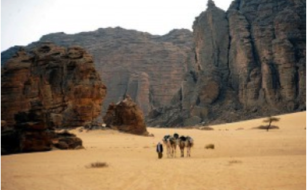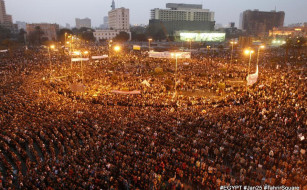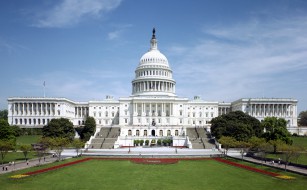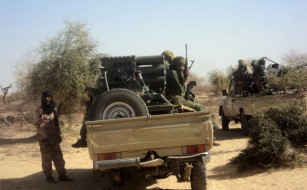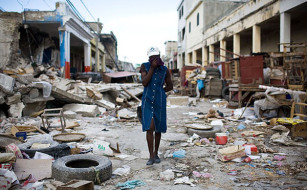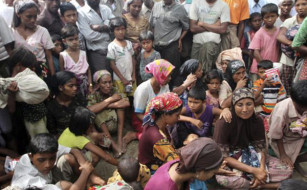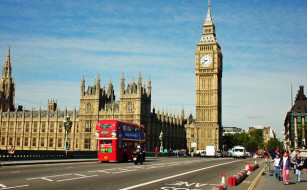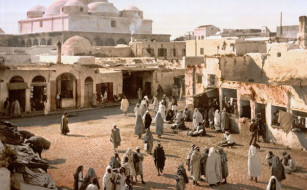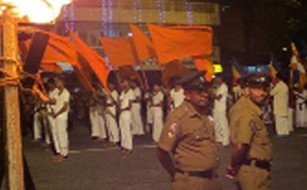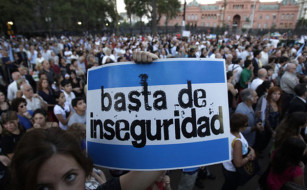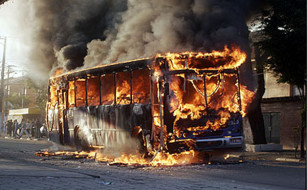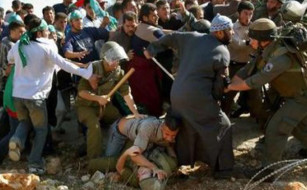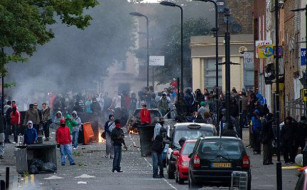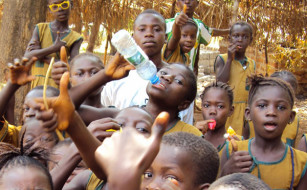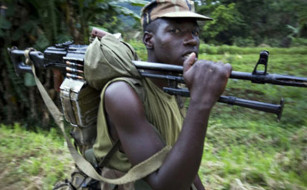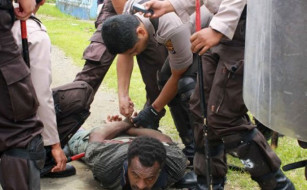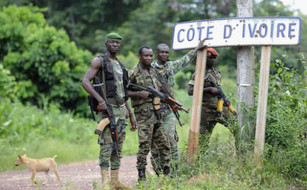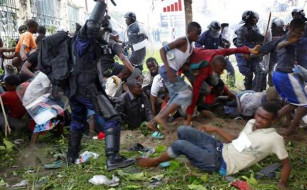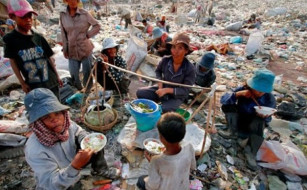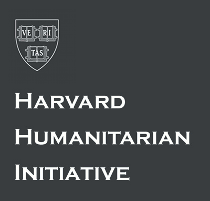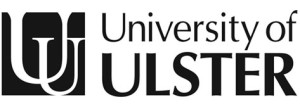Armies out of Control: Special Report on Covid-19 and State Crime in the Sahel
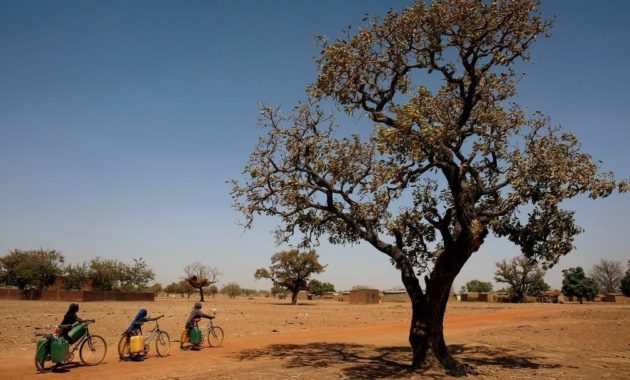
Jeremy H. Keenan
By late June 2020, the number of deaths officially attributed to the COVID-19 virus in the five Sahelian countries of Mali, Niger, Burkina Faso, Chad and Mauritania, known as the G5S (see below), was about the same as the number of civilians murdered by the armies of Mali, Niger and Burkina Faso in those three countries in a series of ‘war crimes’ during the same period. By mid-20 June, the official number of COVID-19 deaths in the G5S was 411, while the number of civilians murdered by the armies of Mali, Niger and Burkina Faso was around 500 (see below). By the end of June, with deaths from the pandemic still increasing and the number of army murders hopefully ended, the numbers for these two causes of death will have roughly equated.
This Report focuses primarily on the documented atrocities committed by these three seemingly out-of-control armies during the first months of 2020, mostly during the three-month period from mid-to-late January to mid-April. However, in trying to explain these atrocities, the Report places them in the wider context of two other prevailing events: the COVID-19 pandemic, and the ongoing ‘Sahel war’, a supposedly ‘counterterrorism’ operation now well into its eighth year. The Report also gives a brief historical account of events leading up to the ‘war in the Sahel’, deeming this necessary to an overall understanding of the current situation.
The Report has nine sections:
- Outlines the ‘Sahel’ as a region of Africa and its main characteristics.
- Provides a summary account of the state of the COVID-19 pandemic across the region.
- Provides a summary background history and current state of the ‘counter-terrorism’ war across the region.
- Focuses in narrative form on the atrocities committed by the three armies of Mali, Niger and Burkina Faso during this brief period of time.
- Provides analysis of these armies’ atrocities and the ways in which they are linked to the COVID-19 pandemic.
- Introduces other possible ‘war crimes’ being committed by these and other G5S countries, notably the deaths in detentions of alleged ‘terrorist’ prisoners, as well as the impunity and corruption of the local governments and their armies.
- Looks at the possible implications of these ‘war crimes’ for: (i) the future relations between the civilian populations, their governments, their security forces and the ‘terrorist/jihadist’ groups operating in the region;(ii) the international community: notably the specific Western countries providing military and humanitarian assistance to the countries of the Sahel (such as France, the US, Germany, UK and others); international organisations involved in the regions, notably the UN and EU; human rights organisations, such as Human Rights Watch, and international aid donors.
- The response of the G5S and France to the allegations of ‘war crimes’.
- Conclusion.
SECTION 1. The Sahel
This report focuses on the five countries of the Western half of the Sahel, namely Mauritania, Mali, Burkina Faso, Niger and Chad. Since 2014, these five countries have been known as the G5 Sahel or G5S, an institutional framework for coordination of regional cooperation in security and development matters, largely in response to the fight against ‘terrorism’ in the Sahel, which began in 2012.
Sahel is an Arabic word meaning shore or coast, literally the shore or southern edge of the great Sahara Desert. It is properly defined in ecoclimatic and biogeographic terms as a zone of transition varying in width from several hundred to a thousand kilometres. The zone, containing belts of semi-arid grasslands, savannas, steppes, and thorn shrublands, separates the Sahara from the wooded Sudanian savanna to the south. The zone has a semi-arid climate and stretches from the Mauritanian shore of the Atlantic in the West over some 5,900 kilometres to the Red Sea coast of Sudan and Eritrea in the east. Its area of just over 3 million square kms., is approximately the same size as the former Western Europe prior to the collapse of the USSR, if the northern half of Fennoscandia and Iceland are excluded. It includes parts of northern Senegal, southern Mauritania, central Mali, northern Burkina Faso, Niger, the extreme north of Nigeria, central Chad, central and southern Sudan, Eritrea and the extreme north of Ethiopia. However, since the start of the ‘Sahel war’ in 2012, the term Sahel has acquired a more geopolitical usage and has become almost synonymous with the G5S States.
The population of the G5S (Mauritania, Mali, Burkina Faso, Niger and Chad) states is 81.15 million (2018). Although predominantly Muslim[1], the regions is ethno-linguistically, racially and occupationally diverse. The more sparsely populated northern regions are occupied predominantly by Arab, Tuareg and Tubu (Tebu) tribes, who are generally recognised and spoken of racially as being ‘white-skinned’, while the more populous southern regions are inhabited by a multiplicity of ‘black-skinned’ ethno-linguistically distinct African tribes, such as the Hausa, Fulani (Peul)[2], Wolof, Mandinka, Malinké, Songhai, Bambara (Mandé), and several smaller ones such as the Dogon of Mali. All of these major tribal/ethno-linguistic groups are found in more than one country.
The region is characterised traditionally by a major occupational cleavage between semi-nomadic, transhumitic pastoralists in the north and more sedentary agriculturalists in the south. In the last few years, the predominantly symbiotic relationships between these diverse occupations and cultures has given way, largely as a result of the prevailing ‘Sahel war’ and increased pressure on limited resources, to increased tensions and conflicts between many of these groups
Measuring poverty is difficult and can be very misleading. However, of the many global indices of poverty, the countries of the Sahel invariably rank at the bottom or close to the bottom. For example, a leading global NGO,[3] ranked four of the G5S states (Mali, Burkina Faso, Niger and Chad) amongst the ten poorest countries in the world. Countries ranked by such poverty could well do without a prolonged counterterrorist war, the COVID-19 pandemic and, most of all, the massacring of its civilians by its own armies.
SECTION 2. The state of the COVID-19 pandemic across the Sahel
COVID-19’s slow start in the Sahel
Africa’s first confirmed COVID-19 case was recorded in Egypt on 14 February.[4] During the following month, the overwhelming majority of the media coverage by the Sahel’s many news sites was focused on the spread of the virus globally and the precautions being taken to prevent it spreading into the Sahel’s states. In fact, the virus was slow to gain a foothold in the Sahel. Notwithstanding the media concern and coverage, the number of confirmed COVID-19 cases in the four Sahel countries of Mauritania, Mali, Niger and Chad at 24 March was only 12. In Burkina Faso there were 33 confirmed cases, but with 31 of them being in the capital, Ouagadougou, which is technically not in the Sahel zone.
If we take all the G5S states as a single region, which it has now become in a politico-military context, the region’s first two reported cases of the virus were in Burkina Faso on 9 March, with its first reported death on 18 March. Mauritania reported its first case on 13 March, with its first death on 30 March, while both Niger and Chad reported their first cases on 19 March, with their first reported deaths on 25 March and 29 April respectively. Mali reported its first two cases on 25 March.
Some media commentators raised questions as to whether the virus’ seemingly slow arrival and spread in the Sahel were perhaps related to the region’s drier and hotter climate, or perhaps because fewer foreigners travelled to the Sahel than other parts of Africa. Or were there other reasons, such as the governments’ quick actions to try and contain the virus?
In Mali, on 26 March, a day after the first two reported cases, President Ibrahim Boubacar Keïta (IBK) declared a state of emergency and instituted a night-time curfew from 21.00 hours to 05.00 hours. The Supreme Council for National Defence was also quick to announce the suspension of commercial flights into Mali from countries with COVID-19. The authorities also closed schools and clubs, as well as banning public activities and social, cultural and political gatherings with more than 50 people.
In Mauritania, schools and universities were shut down from 16 March, with flights from France, the source of the first case, being reduced and then suspended. Charter flights were banned altogether. By 23 March, the Mauritanian authorities had banned a number of public gatherings, including the largest mobile phone market in the country. It had also reduced its land border crossing points from 34 to 26, including a total closure of the border with Senegal, except for heavy goods vehicles.
Niger was also quick to introduce similar preventive measures, including the closure of its two international airports and the closure of all land borders, except for commercial goods. It also closed schools, clubs, bars, theatres and cultural places, as well as placing a ban on public activities and social, cultural and political gatherings of more than 50 people. People returning from countries with COVID-19 were asked to self-quarantine for 14 days.
Chad closed all its airports on 19 March, except for cargo planes. All gatherings of more than 50 people, as well as major meetings involving foreigners, were banned. Health checks were introduced at national borders and suspected cases quarantined, while the borders with Sudan, the Central African Republic, Cameroon and Nigeria, which had all reported cases of the virus, were closed. Restrictions were also imposed on some internal travel, In N’Djamena, the capital. schools, bars and restaurants were closed, with mosques being told to follow suit. An additional 50 more officials were appointed to the health ministry.
The source of the Sahel’s coronavirus
The speedy measures taken by the Sahel states to try and limit the entry and spread of the virus may well have accounted for its slow take-off across the region. Indeed, almost all of the first reported cases in the region were either foreign nationals or nationals returning from France.
For example, Burkina Faso’s first two confirmed cases were a couple who returned from France on 9 March. In Mauritania, the only two cases that had been confirmed by 19 March were both expatriates working in the country and believed to have come from France. Mali’s first two reported cases were both nationals who had returned from France. As at 21 March, Niger had seven confirmed cases. The first was said to be an Italian expatriate. Of the remaining six, four were said to be Nigeriens returning from France, while one was of Brazilian origin who had arrived from Switzerland and another was Italian. Chad’s first confirmed case on 19 March was a Moroccan who had flown in from Cameroon.
Of these first 14 confirmed cases, six were foreign nationals, of whom five had come from Europe,[5] while eight were nationals all returning home from France. Of these 14, 10 had entered the Sahel from France; two from Italy; and one each from Switzerland and Cameroon. In other words, from the available evidence, as declared by the region’s governments, the virus appears to have first entered the Sahel from Europe, especially France.
The accelerated spread of COVID-19 through March to mid-May and late June
From a slow start, the spread of the COVID-19 virus in the Sahel has accelerated. From the 12 reported cases of infection in Mauritania, Mali, Niger and Chad as at 24 March, along with the 33 in Burkina Faso, the number of reported cases in the G5S states, as reported by the World Health Organisation (WHO), had risen to 1,260 in mid-April and to 2,847 by 15 May, an increase of 126%. The number of reported deaths attributed to COVID-19 in that period rose from 60 to 195, an increase of 225%.
By June 20, the number of officially confirmed cases of the viral infection in the G5S states had risen from 2,847 on 15 May to 7,540 on 20 June, an increase of 165%, while the number of reported deaths had risen from 195 to 411, an increase of 111%.
The Sahel’s limited capabilities to cope with the virus
The Sahel’s abilities to cope with the COVID-19 pandemic are limited by two major encumbrances: firstly, its poverty and underdevelopment; secondly the escalation of its armed conflicts, which have effectively turned most of the region into a ‘war zone’.
Some measure of the region’s poverty is that in Burkina Faso, Mali and Niger, four million people face extreme hunger, a figure that is expected to reach 5.5 million by August (2020). According to the World Economic Forum,[6] annual per capita health spending in 34 of Sub-Saharan Africa’s 45 countries is below $200 – and barely reaches $50 in many of them, including all five G5S States.[7] It is therefore impossible for these countries to fund acute-care hospital beds, ventilators, and the drugs needed to confront diseases like COVID-19. Paying for doctors, nurses, X-ray technicians, and other health professionals, together with their equipment, can seem almost like a luxury.[8]
These countries face massive shortages of medical gear, such as personal protective equipment (PPE), medical equipment, drugs and trained medical personnel. However, even if such gear was obtainable, which is difficult in a desperately competitive world market, the reduction in commercial flights makes it difficult to bring it in. Moreover, the socio-economic conditions and poorly developed infrastructures of these countries make the basic COVID-19 containment measures practised in wealthy nations – staying at home, social distancing, washing hands often – almost impossible to follow.[9]
The impact of COVID-19 on these countries is being compounded by the diversion of resources from measles and other health programmes. For example, a new outbreak of polio was reported in Niger in late April, following the suspension of the polio mass vaccination campaigns as a result of the COVID-19 pandemic.[10]
The death rate of COVID-19 victims is almost certainly higher in the Sahel, as in other poor regions of the world, because of the prevalence of underlying medical conditions, which are themselves induced by poverty. In fact, the latest WHO data shows the Sahel countries as having higher death rates than the average rate of 5% deaths from confirmed cases. The figures are: Chad (6.6%), Niger (6.2%), Burkina Faso (5.5%) and Mali (5.3%)
The under-reporting of COVID-19 cases
There is also a major problem in actually measuring the number of COVID-19 cases and deaths in these countries, owing primarily to the combination of a lack of access to healthcare centres and the lack of testing kits and related facilities. For example, Burkina Faso had only 400 coronavirus test kits and three health facilities in the country able to carry out COVID-19 tests. The facilities of the other G5S countries are little better.[11]
Owing to a lack of testing, the true numbers of both COVID-19 infections and deaths are likely to be very much higher than the reported, official figures. If developed countries like the USA and UK cannot record the precise number of COVID cases, and even the precise number of deaths, less developed countries certainly cannot be expected to do so. The Financial Times, which undertook an analysis of COVID-19 fatalities in 14 countries, concluded that the death toll from the coronavirus may be almost 60% higher than reported in official counts.[12]. For less developed countries that figure will be very much higher. We do not yet have adequate data to give precise figures, but indications are that it could be at least three or four times higher. For example, in Ecuador’s Guayas province, just 245 official COVID-19 related deaths were reported between March 1 and April 15. However, data on total deaths show that about 10,200 more people died during this period than in a typical year — an increase of 350 per cent.[13] In Algeria, Dr Lyes Merabet, president of the Syndicat national des praticiens de santé publique (SNPSP), estimated that the number of confirmed cases of the virus is at least three times higher than the official figure.[14]
These many problems are sometimes compounded by traditional cultural beliefs and practices, such as caring for the sick within the family. However, while these are often laudable and often efficacious, especially the use of many traditional medicines, they are often all that people have to rely on, especially in distant rural areas where modern health-care facilities are either non-existent, inaccessible or perhaps distrusted. However, caring for the COVID-19 sick within the family is likely to spread the virus, especially when people are not prepared for it. Moreover, being predominantly Muslims, bodies are buried as soon as possible after death, thus inhibiting autopsies, even if they were available. The result is that many cases and deaths, probably the majority, are not recorded.
The financial costs of COVID-19
It is far too early to try to assess the financial costs of COVID-19 on the Sahel region. Indeed, it is doubtful whether it will ever be possible to do so, beyond calculating what can never be more than best estimates. Nevertheless, a few minutiae of government information give some idea of how the region might suffer.
For example, the Malian Company for the Development of Textiles (CMDT), has calculated that Mali’s cotton producers will lose more than a fifth of their income during the 2020-2021 season because of COVID-19. Cotton is Mali’s second-largest export after gold, contributing close to 50% of export earnings. About 3.5 million Malians, that is around 40% of the rural population, depend directly on the cotton sector for their livelihood. The link between COVID-19 and the cotton price works as follows: The COVID-19 pandemic has caused a crash in world oil prices, thus making synthetic fibres more competitive than natural fibres. As a consequence, textile factories in Asia are shutdown; cargoes of fibres are still awaiting export and the cotton price is at its lowest since 2009. Malians will suffer greatly.
In Niger, the Prime Minister, Brigi Rafini, announced on 5 June (2020) that Niger had recorded a loss of 35,000 jobs out of a potential workforce of nearly 800,000 salaried jobs, because of COVID-19. At the same time, the Finance Minister, Mamadou Diop, said that Niger had lost 199 billion CFA francs (US$341 million) due to the epidemic. This figure was attributed to a loss of US$134 million in customs duties, a fall of US$202 in tax revenue and a loss of US$5 million in non-tax revenue. As the year progresses, these loses will inevitably increase. Data of comparable magnitudes can be expected to emerge from the other G5S countries
The problems of the pandemic compounded by the violence of the ’Sahel war’
Even before the start of the current conflicts of the ‘Sahel war’, the region’s healthcare facilities, as in the world’s poorest countries, were totally ill-equipped to face the COVID-19 pandemic. The spread of extremist and inter-community violence across most of the region has merely made the situation infinitely worse.
The increasing escalation of the Sahel war has led to the effective withdrawal of the State from many parts of the region, such as much of the Diffa region of SE Niger and the Tillabéri and Tahoua regions of western Niger; much of northern Burkina Faso and increasingly the eastern regions; along with much of the northern, eastern and central regions of Mali.
The withdrawal of the State and its healthcare facilities from many of these poorer and more war-ravaged regions has increasingly been accompanied or followed by the withdrawal of NGOs, both local and international, leaving many parts of the Sahel with little or no access to medical and health care services. Moreover, people who are able or prepared to travel to urban centres for medical assistance now face the increasingly dangerous risks of land transport.[15]
Since the arrival of COVID-19 in the region, ‘terrorist’ and ‘jihadist’ groups are exploiting the pandemic, taking advantage of restrictions and vulnerabilities among local communities to expand their foothold through opportunistic attacks and propaganda.[16]
SECTION 3. summary background history and current state of the ‘Sahel war’
The current ‘war in the Sahel’, ostensibly a major counter-terrorism operation, was precipitated by the NATO-led (France, UK and USA) military intervention in Libya in February 2011 that culminated in the gruesome killing of Colonel Mouamar Qadhafi in October 2011. Qadhafi’s overthrow led to thousands of Tuareg, who had sought livelihoods in Libya after fleeing droughts in the Sahel or who had been recruited as mercenaries to bolster Qadhafi’s resistance to the NATO intervention, returning to the Sahel.[17] Most were heavily armed and experienced fighters. While Niger was aware of the potential problem posed by these returnees, the Mali government ignored their plight, thus encouraging them to join forces with the few remaining elements of the latest Tuareg rebellion[18], which had begun in 2007 but which had been reduced by 2009 to – at most – a few hundred fighters who had retreated into the Abeibeira region of Mali’s northeastern Kidal region, while their leader, Ibrahim ag Bahanga, had sought exile in Libya. Libya’s revolution gave Bahanga the opportunity to return to Mali. However, instead of becoming Qadhafi’s recruiter, he initiated talks between young Tuareg activists in the Abeibeira region, who, in his absence, had formed the separatist Mouvement National de l’Azawad (MNA),[19] and Tuareg soldiers returning from Libya where they had served in Qadhafi’s security brigades.[20] In late 2011, the two groups joined together, forming the Mouvement National de Libération de l’Azawad (MNLA).[21]
Algeria’s secret intelligence service, the Département du Renseignement et de la Sécurité (DRS), immediately saw that the MNLA posed a major threat to Algeria’s own security. The well-armed MNLA fighters would easily defeat Mali’s ill-equipped, ill-led bedraggled army and ignite Tuareg irredentism in southern Algeria. The DRS’ strategy was to discredit the MNLA by literally overwhelming and subordinating it – politically and militarily – to an Islamist incursion of its own making. At that time – 2011 – the main terrorist force in the region was Al-Qaeda in the Islamic Maghreb (AQIM), which had grown out of Algeria’s civil war (‘Dirty War’) of the 1990s and whose leadership had been so thoroughly infiltrated by the DRS that many people in the region regarded AQIM as merely a branch of the DRS.[22]
By late 2011, AQIM, under the command of Abdelhamid Abou Zeid, had already been well-ensconced in Mali’s Kidal region since around 2009. However, as the MNLA began mobilising itself in northern Mali, the DRS created two new Islamist extremist groups alongside AQIM. One, Ansar al-Dine, was formed under the leadership of Iyad ag Ghali, a former Tuareg rebel leader who had failed in his bids to take over the leadership of both his local noble Iforas tribe as well as the MNLA, but had been associated with the DRS since the late 1980s and was generally known as the ‘DRS’ man in Mali’. The other was the Mouvement pour l’Unification et le Jihad en Afrique de l’Ouest (MUJAO), which was comprised mostly of ‘black’ (African) from the region,[23] many of whom had formerly been members of AQIM.[24]. Another extremist group operating in the region at that time was that of Mokhtar ben Mokhtar(MBM’s). MBM’s group went through several name changes, such as al-Mulathameen (the Veiled brigade), or al-Mua’qi’oon Biddam (Those who Sign with Blood) and Al-Murabitoun. Although something of a ‘freelance’ who had a difficult relationship with Abou Zeid, MBM had a longstanding working arrangement with the DRS.[25]
These four groups – AQIM, Ansar al-Dine, MUJAO and MBM’s variously named groups, with the covert assistance of the DRS, who provided fuel and other supplies, hospitalisation, money and arms, embraced the MNLA.
The first shots, which marked the beginning of this new Tuareg rebellion in Mali, were fired on January 17, 2012 when a group of Tuareg rebels attacked the town of Ménaka. On the following day, MNLA forces attacked both Aguelhok and Tessalit. On 24 January, at least 80 Malian soldiers, who had run out of ammunition, were captured and executed in cold blood; many had their throats slit.[26] This war crime has never been fully investigated. The evidence, such as it is, points to members of AQIM who were probably intent on casting aspersions on the Tuareg MNLA fighters and were most likely acting on the instruction of the DRS. Within the next three weeks, the MNLA undertook further attacks on the towns of Anderamboukane and Léré (January 26), Niafounké (February 4) and Tin Zaouatene (February 8). At Tin Zaouatene, a substantial number of Malian soldiers were driven out of the town and forced to take refuge in Algeria. By mid-March, the UN’s Office for the Coordination of Humanitarian Affairs (OCHA) had reported that 195,000 people had fled their homes in Mali since mid-January, with about half of them fleeing to neighbouring countries. This human catastrophe was to get much worse.
On the 21 March (2012), an army captain, Amadou Sanogo, angered by the events at Aguelhok and the collapse of the Malian army, led a coup d’état that overthrew the Malian government of President Amadou Toumani Touré (ATT). Scarcely two weeks later, on 6 April 2012, the MNLA declared the independence of Azawad – northern Mali. However, the rebellion had already been effectively hijacked by the Islamists, who established a vicious supposedly sharia-based rule centred on the cities of Gao and Timbuktu. The original MNLA rebels were effectively discredited by these events and militarily and politically sidelined as the Islamists established themselves in northern Mali. By December 2012, the Islamists, led by Iyad ag Ghali, were threatening to move on Bamako, leaving the Mali government, led by Dioncounda Traoré [27] little choice but to turn to France for help.
The French military intervention, under the name Operation Serval, commenced on 11 January 2013.[28] The number of Islamists killed in these initial operations is not known. The total number of Islamists in Mali at this time was estimated at being around 2,500, although the number of committed jihadists threatening Bamako and Mali at that time was estimated by French and US sources at 800-1,200.[29] Of those, an estimated 200 were killed in the initial days of the French assault: at Konna, Diabili, on the road back to Gao and in the bombing raids on Islamist bases around Gao, Timbuktu, Ansongo and Kidal. French Defence Minister Jean-Yves Le Drian, possibly exaggerating slightly, put the number in the hundreds. Another 100 or so may have been killed in the flushing-out operations around Gao and Timbuktu and in subsequent guerilla counterattacks. However, most of the heavy fighting took place in the rugged Tigharghar Mountains north of Kidal where at least 800 Chadian soldiers,[30] sent by Chad’s President Déby to assist the French military, battled hardcore Islamists fighters for at least two months. On 8 March, a French military report said that more than 100 Islamists had been confirmed killed in the Tigharghar assault. By April, that number had probably risen to around 200. Thus, during the first three months or so of the French assault, some 500 Islamist fighter may have been killed, about half of the estimated number of committed jihadists.[31] Three of the five Islamic leaders Abdelhamid Abou Zeid, Abdel Krim[32] and Omar Ould Hamaha were reportedly killed. Mokhtar ben Mokhtar fled to Libya, while Iyad ag Ghali, his family and several of his fighters, to the ongoing concern of the French military, were given sanctuary across the border in Algeria.[33]
While the start of Operation Serval might therefore appear to have had quite a successful ‘kill rate’, effectively it did little more than drive many of the jihadist fighters into another parts of the Sahara-Sahel, or encourage them to melt back into the local communities, especially in the northern Gao and Timbuktu regions, from where they continued to harass the French, Malian and UN peacekeeping forces.[34] However, Operation Serval, which began, at least officially, with 1,000, but whose number quickly increased to at least 1,600,[35] was never able to get on top of the situation militarily, with ‘terrorist’ incidents continuing on a regular basis. Finally, on July 15, 2014, after 18 months, France decided to ramp up its military operation in the Sahel dramatically. It officially terminated Operation Serval and replaced it with a much larger operation, named Barkhane, numbering 4,500 troops, headquartered in N’Djamena, but deployed across what was to become the G5S. By February 2019, according to France’s Minister of the Armed Forces, Florence Parly, over 600 jihadists had been ‘neutralised’ since the beginning of Operation Barkhane.[36] By June 2020, that number had increased by another estimated 200-300[37], bringing the estimated total number of jihadists ‘neutralised’ since January 2013 to somewhere in the region of 1,500.
In the six years since the start of Operation Barkhane, and the seven and half years since the start of the French military intervention, the overall security situation across the Sahel, as measured by the both the geographical expansion of jihadist activity and the number of their attacks on state and non-state actors and the ensuing number of deaths, has deteriorated progressively. Increasingly, the situation was being referred to by the media as the ‘Sahel War’ or the ‘war in the Sahel’
Between 2013 and 2016, the number of deaths from terrorist attacks in Burkina Faso, Mali and Niger was in the hundreds each year, reaching an estimated 770 in 2016.[38] On 8 January 2020, Mohamed Ibn Chambas, the U.N. envoy for West Africa and the Sahel, told the U.N. Security Council that terrorist attacks had increased five-fold in Burkina Faso, Mali and Niger since 2016, with over 4,000 deaths reported in 2019 compared to an estimated 770 deaths in 2016. In Burkina Faso, deaths rose even more dramatically from about 80 in 2016 to over 1,800 in 2019, he said.[39]
The mounting number of displaced persons is equally disturbing. In Burkina Faso alone, the figures have increased at a staggering pace to more than 830,000, in addition to approximately 21,000 Burkinabè citizens who have sought refuge in neighbouring countries. All but 80,000 of these have been since the start of 2019 – and leaving two million in Burkina Faso alone in need of humanitarian assistance.[40] If Niger and Mali are included with Burkina Faso, the number of displaced persons comes to well over a million. In addition, a further estimated 2.8 million people are living in displacement in the Lake Chad region.[41]
What began as and still is ostensibly a counter-terrorism operation, led by France, has undergone many changes and phases since the launch of Operation Barkhane six years ago. At least seven key issues or phases should be noted:
- i) The changing names and composition of the jihadist groups
At the time of France’s military intervention in Mali in 2013, the main Islamist groups in Mali were Ansar al-Dine, led by Iyad ag Ghali; AQIM, under the leadership in the Sahara and Sahel of Abdelhamid Abou Zeid, and MUJAO, under the leadership of Sultan ould Badi, Hamada Ould Mohamed Kheirou and the Algerian, Ahmed Al-Talmasi. Mokhtar ben Mokhtar (MBM) was operating more independently in northern Mali at that time with his group al-Mulathameen, or al-Mua’qi’oon Biddam, as it was also known. MBM’s al-Mulathameen merged with MUJAO in August 2013 to form Al-Mourabitoun.
In Mali, the Force de libération du Macina (FLM), also known as the Macina Liberation Movement or Katibat Macina, led by a Peul preacher, Amadou Koufa, first came to prominence in January 2015, two years after the start of the French military intervention, when it claimed responsibility for attacks in central and southern Mali.[42] FLM was, and still is, closely linked to Iyad ag Ghali’s Ansar al-Dine.
The main jihadist group operating in Burkina Faso, but also crossing into Mali, is Ansar ul-Islam (Ansarul Islam). Led by Malam Ibrahim Dicko, a radical Peul preacher from the northern town of Djibo, who fought with the AQIM groups in Mali in 2012-2013; the group announced its existence in December 2016 when it claimed responsibility for the attack on an army post at Nassoumbio, 30 kms from the Mali border, in which at least 12 Burkinabè soldiers were killed.
The previous year, 2015, saw the creation of the Islamic State in the Greater Sahara (ISGS) after a split within Al-Mourabitoune during the summer months. ISGS’ leader, Adnan Abu Walid al-Sahraoui, who had been one of leaders of Al-Mourabitoune and close to MBM, declared his allegiance to Abu Bakr al-Baghdadi,[43] leader of the IS in May 2015 and split with MBM.[44] Little attention was paid to al-Sahraoui and the ISGS until October 2017, when they claimed to have carried out the ambush against Nigerien and US Special Forces soldiers outside the village of Tongo Tongo, Niger, in which four US soldiers were killed.
In March 2017, the three jihadist groups of Ansar al-Dine, FLM and Mokhtar ben Mokhtar’s faction of Al-Mourabitoune merged into the Jama’a Nusrat ul-Islam wa al-Muslimin’ (JNIM)(Group to Support Islam and Muslims), under the overall leadership of Iyad ag Ghali. By 2020, the two major jihadist groupings in the Mali-Niger-Burkina Faso ‘three borders’ region have been JNIM and ISGS. However, in the last few months, there have been reports of increasingly fierce fights between JNIM and ISGS. Although the French military has been flagging up the ISGS as the more dangerous jihadist group operating in the three borders region, it would seem that JNIM still holds the upper hand.
Since 2017, Niger’s south-eastern Diffa region and the Lake Chad basin area of Chad, have come increasingly under attack from elements of Boko Haram. In 2015, Abubakar Shekau’s Boko Haram pledged allegiance to the Islamic State (IS) and changed its name to Islamic State West Africa Province (ISWAP). However, Shekau refused to accept IS’ appointment of Abu Musab al-Barnawi[45] as its de facto leader. After much infighting, the group split in 2016 with Shekau’s faction retaining Boko Haram’s original designation of Jama’atu Ahlis Sunna Lidda’Awati Wal-Jihad (JAS). ISWAP — led by Abu Musab al-Barnawi and Mamman Nur — left Boko Haram’s main base in the Sambisa Forest of northern Nigeria and reached Lake Chad.[46] There, they succeeded in rallying the bulk of the jihadist fighters and obtaining IS validation, thus keeping the designation of ISWAP. Shekau’s faction retained the original name of JAS.[47]
- ii) The southwards expansion of jihadism
From late 2015 onwards, signature attacks on such international targets as Bamako’s Radisson Bleu hotel (2015),[48] Cote d’Ivoire’s Atlantic coast resort of Grand Bassam (2016),[49] a Turkish restaurant and hotel in Ouagadougou (2017)[50] and the French Embassy in Ouagadougou (2018)[51] gave warnings of the jihadist’ geographical reach and ability to strike more or less anywhere in West Africa.
By 2018, jihadist attacks were becoming commonplace through much of northern Burkina Faso and increasingly in the east of the country, as well as threatening neighbouring countries such as Cote d’Ivoire, Ghana, Togo and Benin.
In Mali, from 2016 onwards, the focus of jihadist-terrorist activity moved increasingly from northern to central Mali, with the result that from early 2018 to the present, the main focus of jihadist activity has been central Mali and the Gourma-Liptako region of southern and southeast Mali, southwest Niger and northern Burkina Faso, or what has become more commonly known as the ‘three borders’ region.
This southwards expansion of jihadism in this part of the Sahel mirrors a wider regional movement, which began around the years 2006-2009 and was largely engineered through the DRS’s infiltration of AQIM. This involved AQIM-DRS encouraging extremists in northern Algeria to move into southern Algeria and from there into the Sahel.
iii) France seeks military support from G5S – and Europe
From its inception, Operation Barkhane, although having some limited success in the predominantly Tuareg regions of northern Mali, has failed militarily to prevail over, let alone eliminate, the jihadist threat across most of the Sahel, which has escalated especially in the last two years. One reason for this is because France has approached the Sahel as a ‘counter-terrorism’ operation, failing to understand the situation on the ground, especially the nature of the escalating inter-community conflicts, which it has been partly responsible for instigating.
France’s solution to overcoming its inability to contain the situation was to supplement its own Barkhane force with a cross-border joint force comprising troops from the five Sahel States. The joint force, known as G5S, was officially launched by the G5S leaders in Bamako on 2 July 2017, with its first, largely symbolic, operation, being in the three borders region in November (2017).[52]
The G5S has failed to become the potent force it was intended to be. Indeed, in many respects, it has merely provided the jihadists with ‘soft targets’. From its inception, the G5S failed to raise its required budget, with most donor countries being reluctant to deliver on pledges. There have also been difficulties in establishing a capable, unified command structure, while the force, ideally intended to reach 5,000 troops at full operational capability, has been ill-trained, ill-equipped and lacking in the experience and will necessary to counter increasingly confident and resilient jihadist forces. As this report reveals, the calibre of Mali’s, Niger’s and Burkina Faso’s armed forces has become a serious problem.
- iv) The concentration of jihadists in ‘three borders’ and Lake Chad regions
Since around 2017, jihadist activity has been concentrated increasingly in the Liptako-Gourma ‘three borders’ region and the Lake Chad region. For example, in its efforts to concentrate more of its forces in the Liptako-Gourma region, Operation Barkhane redeployed the troops from its base at Madama, close to the Libyan border in northern Niger, to its base at Gossi in the Liptako-Gourma region.[53] The last convoy left Madama on 7-8 July 2019, with the base being temporarily moth-balled. The new ‘Takuba’ strike force, comprised of European ‘Special Forces’ (see below) and set to deploy sometime in the summer of 2020, is to be concentrated in the ‘three borders’ region, where JNIM, ISGS and Ansar ul-Islam are all operating. Since mid-2019, possibly earlier, France has been designating ISGS as the major jihadist force in the ‘three borders’ region. Boko Haram factions are the main insurgents in the Lake Chad region and Niger’s south-eastern Diffa region.
With both ISWAP in the Lake Chad region, and ISGS in the ‘three borders’ region, both growing in power and influence, there has been growing fear in the French military command that the two groups could in some way combine, forming a major force across the Sahel.
- v) The escalation of inter-community conflicts
After more than seven years of fighting so-called ‘jihadists’, French military intelligence will have noticed a number of trends. Since 2017 especially, the focus of Mali’s crisis has gravitated increasingly from northern to Central Mali. Also, since that geographical shift, more deaths have resulted from inter-ethnic and inter-community violence than from jihadism.[54] Moreover, over this period, not only have jihadist leaders been easily replaced, but their followers – the jihadist fighters – have been increasing in number and become, especially since 2018, increasingly successful in their attacks on state targets, especially the local security forces of Mali, Niger and Burkina Faso.
Indeed, it might well be suggested that the increasing failure of the French and G5S forces is because they have been ideologically committed to fighting a counter-terrorism operation, while failing to look at some of the more deep-seated issues behind these trends, such as local ethnic histories and tensions, poor governance and even, perhaps, issues related to climatic change.
Most of Barkhane’s victims have no names or ages in the official communiqués. Rarely is anything known about them except that they were killed in a battle or bombardment, in a place that is invariably located inaccurately or named incorrectly, and without really knowing the cause of their death or what was done to their bodies. Only rarely do the military or the media, who rely on these official communiqués, question the identity of those killed, any more than their assumed membership of an armed group that is labelled as being ‘terrorist’. A closer analysis would reveal that in many cases, they were killed simply because they were at a place that was suspect.
Enough research has now been done, mostly by NGOs, for us to know that very few of these so-called ‘terrorists’/ ‘jihadists’, should be labelled as such. Many studies conducted by NGOs, think-tanks or international agencies, such as the Institute for Security Studies (ISS), the International Crisis Group (ICG) and the United Nations Development Program (UNDP), have shown that most of these ‘jihadists’ were not driven by any religious fervour, ready to die in suicide attacks to impose sharia on their fellow men as part of an improbable ‘global jihad’. Rather, most have belonged to local insurgencies fuelled by societal and socio-economic issues, with many being little more than prisoners of circumstances, faced with little or no effective choices or a bad meeting resulting in their being forced – often as little more than children – to join the insurgents.[55]
As early as 2016, an ISS study[56] of 63 former members of armed jihadist groups revealed that their presence in the armed groups invariably had little to do with economic, religious or ideological factors. The main commitment in joining local armed groups – often under force – was the desire to protect oneself, one’s family, community or economic activity, such as tending livestock, rather than any process of religious indoctrination.
The history of the local Peul community defence group Dewral Pulaaku and its leader Amirou Boulikessi is typical of most such armed groups. When Tuareg MNLA rebels drove the Malian army out of northern Mali in 2012, the local Peul communities were worried about the increasing theft of their livestock.[57] Amirou, the village headman, went to Bamako to request government help, but in vain. On his return, another armed group, the MUJAO, which had split from AQIM, had effectively taken over control of the region from the MNLA. At first, Amirou sought the help of MUJAO to protect his community from livestock thefts. Then, as MUJAO took control of Gao and ousted the MNLA, the MUJAO turned to these local communities to provide them with young men to undergo combat training to better defend their communities. Since then, as the French forces attempted to drive MUJAO and their AQIM associates out of Gao and the surrounding region, men like Amirou, whose loyalty was never to anything other than their own communities and the Malian state, were suspected and then labelled as being jihadists – ‘terrorists’. That not only put his life in danger but that of other community members.
A similar pattern of events has led Peul herders in the northern Tillabéri region of Niger to seek the protection of MUJAO and the ISGS from predominantly Tuareg raiders, many of whom belonged to the Tuareg self-defence group known as the Groupe autodéfense touareg Imghad et alliés (GATIA), which was (and still is) part of the ‘platform’[58] supporting the Malian state. Thanks largely to poor French intelligence, Peuls and Peul communities are now depicted, quite unjustifiably, as ‘jihadists’ – ‘terrorists’ – or ‘allies of the jihadists’.
Worse still, as the Peul have been increasingly considered as ‘terrorists’, the French military has allied itself with and backed those groups, such as GATIA, which have been fighting them. This has merely encouraged more attacks on innocent Peul communities, which, unsurprisingly, have been forced to form their own self-defence units.
In Mali, since mid- to late-2018, this inter-community violence, triggered by a combination of bad governance, apparent climatic change, an ill-trained and ill-equipped Malian army, poor intelligence and the all-too-frequent assumption that the Peul are ‘terrorists’, has led to appalling massacres of civilians in the Peul and Dogon communities of Mali’s Mopti region,[59] as well as across the border in Burkina Faso.[60]
Many young men, most of whom have received no schooling and come from very poor families, have been attracted by the promise of money, a weapon, motorcycle and the promise of a better future. They were told what they wanted to hear, but once recruited to a militant group in this way, they realised that it was not what they imagined. They did not know what they would be asked to do.
Another phenomenon, often ignored by Western and G5S military commanders, is that many so-called ‘jihadists’ never wanted to become a jihadi. An ICG (2019) report[61] on the conflict in central Mali found that not all members of the FLM enrolled voluntarily. On the contrary, the ICG found that jihadist leaders, such as Amadou Koufa, “force families to register their children under penalty of sanctions.”[62]
A more worrying reason why many young men join the jihadist groups is to avenge the extrajudicial killings, or other abuses, of their parents or other family members by the military and pro-government militias of these countries. Corinne Dufka, West Africa’s Director of Human Rights Watch (HRW), has documented since 2015 how the atrocities committed by the militaries of the region have encouraged recruitment by the jihadists and other armed groups.[63]
However, there are rarely any traces of these nuances in the speeches of France’s political and military leaders. For them, the jihadists they are fighting in the Sahel are the same as those who attacked Charlie Hebdo or the Bataclan, or those who joined the Islamic State in the Middle East. Until France’s political and military leaders understand the complex social-economic situations of the Sahel and the local factors that have pushed young men to take up arms, Operation Barkhane will continue to fail and the security situation in the Sahel l continue to deteriorate.[64]
- vi) The escalation of conflicts 2018-2020
Amidst the overall escalation of violence across the Sahel, especially since 2018, another trend became noticeable: the increasing number and scale of jihadist attacks on the security forces of Mali, Burkina Faso and Niger.
While jihadist attacks in Mali had increased throughout 2017,[65] the attack on the Malian army post at Dioura[66] on 17 March 2018, marked the beginning of a new strategy by the jihadists. It involved large-scale attacks on army posts, with greater resultant army causalities. At Dioura, at least 23 soldiers were killed.[67]
Further such large-scale attacks by a combined force of JNIM. FLM, Ansarul Islam and ISGS jihadists on military posts at Mondoro and Boulkessi[68] on the night of 30 September – 1 October (2019), killed at least 40 FAMa[69] soldiers.[70] One month later, on 1 November, a further 49 FAMa soldiers were killed when the ISGS launched a massive attack on the Indelimane garrison.[71] In a familiar pattern, dozens of motorcyclists encircled the base before softening it up with a mortar and rocket bombardment and blasting open the entrance with a car bomb. The 80 FAMa troops were quickly overrun.[72] Five days later, a military-escorted convoy of five buses transporting employees of the Canadian Semafo gold mining company from their Boungou mine in eastern Burkina Faso was attacked by Ansarul Islam, killing at least 37 civilians and wounding more than 60. The number of Burkinabè soldiers killed was not reported.
Niger’s army bases were suffering a similar pattern of attacks. Following an ambush in the Tongo Tongo area on 14 May (2019) in which 28 Nigerien soldiers were killed, the nearby Inatès military camp was attacked on 1 July (2019), with at least 18 soldiers being killed and another four reported missing. Five months later, on 10 December (2019), the same Inatès camp came under massive attack from several hundred jihadists. The attack, claimed by ISWAP, left 71 soldiers dead, 12 wounded and some 30 missing[73]. It was the deadliest attack on Niger’s western front,[74] but a record that was surpassed a month later when, on 10 January (2020), jihadists, believed to be ISGS, killed at least 89 Nigerien soldiers at the military camp at Chinégodar.[75]
Through late 2019 and early 2020, the Malian, Nigerien and Burkinabè armies had lost some 300 soldiers in less than four months. The jihadists were now clearly identifying their army bases as ‘soft targets’, compared to the Barkhane forces, and were attacking them more or less at will and as ready sources of military supplies and equipment.
vii) Increasing anti-French sentiment and the Pau summit (January 2020)
As the attacks on local security forces increased and the overall security situation deteriorated further, opposition to the French military presence mounted, initially in local newspaper op-ed commentaries and then increasingly in public demonstrations in major cities such as Bamako. Local media began raising questions about the purpose and success of the French military presence. In particular, they began asking why, after six years, the security situation was deteriorating when some 4,500 troops were arrayed against a few hundred jihadists. At the more ideological level, questions began to be raised about France’s neo-colonial ambitions in the region.
The controversy came to a head following the death of 13 French soldiers in a helicopter accident while on operation in Mali’s south-eastern Liptako region on 25 November 2019.[76] The accident brought the number of French casualties in the region since the start of operations in 2013 to almost 50. The accident coincided with both the mounting opposition in the Sahel to the French military presence as well as the growing criticism within France to the purpose, strategy and direction of the French military presence in the Sahel.[77]
France’s President Macron, angered by the growing Sahelian opposition to the French military presence, responded to the helicopter deaths by calling for a summit meeting with all the Sahel heads of state to clarify their positions on France’s military presence in the Sahel. The summit, initially scheduled for 15 December 2019 in Pau,[78] was postponed to 13 January 2020, because of the Inatès massacre.
The Pau summit was marked by considerable resentment from within the Sahel States, with many persons and organisations considering it inappropriate paternalism, condescension and insulting to the states of the region. Considerable domestic pressure was placed on Niger’s President Mahamadou Issoufou not to attend, nor even send his chief of staff. The Chinégodar attack of 10 January merely increased the acrimony.
The summit, which was effectively a confirmation of France’s failure in the Sahel to contain jihadist activity, was a tense occasion and negotiated with diplomatic difficulty.[79] The summit’s outcome was not encouraging. Of the summit’s several resolutions and recommendations, the key one, as far as this Report is concerned, was that the military offense would be ramped up. At the same time, France committed to increase its forces in the region, albeit by only 600, and announced the establishment of a common command, which effectively meant that the French army would take over the leadership of the offensive and that the Sahelian forces would merely be auxiliary forces in their own countries. This was a humiliating state of affairs[80] in which the pressure was put on the local armies of Niger, Mali and Burkina Faso to deliver results, measured in terms of successful operations on the jihadists.
SECTION 4. Armies out of control: the committal of war crimes by the Malian, Nigerien and Burkinabè armed forces
For several years, even before the Pau summit, there had been allegations – and some evidence – that the security forces of the Sahel were committing atrocities in their own countries.[81] For example, in the 13 months from January 2019 to January 2020 inclusive, ACLED[82] recorded 86 attacks by the armed forces of Burkina Faso, Mali and Niger on their civilian populations, with 584 fatalities: an average of 45 per month.[83] During February-April 2020, ACLED recorded 69 such attacks with 450 fatalities: an average of 150 per month and a more than threefold increase.
Such accusations are not made lightly. They are based partly on the author’s own long and extensive experience and knowledge of the region, but particularly the recent work by a number of investigative journalists, notably Nathalie Prevost[84] and a number of NGOs.[85]
However, the data on the number of army killings are not clear. That is because several media reports refer to only two set of data: the 99 deaths in Mali documented in the UN Minusma report and the 102 deaths recorded in Niger between 27 March and 2 April in the so-called ‘blue list’ (see below). In fact, both Niger’s Human Rights Commission and Nathalie Prevost’s enquiry records at least a further 67 such deaths in Niger alone, while the number of people executed by the armed forces of the three countries (Burkina Faso, Niger and Mali) during the three months of February-April, as recorded by ACLED, was some 450. If the 26 fatalities recorded by ACLED in January are included, as well as several dozen during May and early June, the total number of recorded army executions since the beginning of 2020 is around 500.
The following three sub-sections describe the killings of civilians by the national armies in Mali, Burkina Faso and Niger, especially in the three-month period February-April 2020.
Army killings of civilians in Mali
Over the last two or three years, there have been an increasing number of reports of the Malian armed forces (FAMa) being involved in the massacre and summary execution of civilians.[86] In both 2018 and 2019, the FAMa were responsible for several killings in the centre of the country, mainly directed against the Peul. Since the beginning of 2020, the FAMa has again resorted to the strategy of terrorising the local populations, especially since JNIM’s attack on the gendarmerie in Sokolo on 26 January 2020, in which 20 gendarmes were killed.
The UN Multidimensional Integrated Stabilization Mission in Mali (MINUSMA) documented during January-March 2020, 101 extrajudicial killings, 32 cases of enforced disappearances, 32 cases of torture and inhuman treatment by the Malian security and defence[87] forces. On 10 June 2020, Amnesty International (AI) published a report on many of these extrajudicial executions or unlawful killings and enforced disappearances that it investigated and documented between February 2020 and April 2020.[88] All the incidents documented occurred in the communes of Diabaly and Dogofry, in the cercle of Niono, in the region of Ségou.
On 30 January, four days after the Sokolo attack, the Malian authorities launched a new military operation called ‘Maliko’. Malian soldiers began their push through Niono on 3 February, starting at the village of Kogoni-Peulh in the commune of Sokolo. One of the witnesses reported: “When the soldiers arrived, they started shooting. Many villagers fled, those close to the mosque sounded the alarm and many others fled to the bush, outside of the village. The herder [who was shot and killed by the soldiers] was among the second group, but he was not able to reach the bush. I was also among those who fled, was able to escape but not him”. Another informant corroborating this testimony said that the herder was killed while he was driving his cattle, in an attempt to flee from the soldiers.[89]
During the following days, the soldiers continued their push through the local villages, launching large-scale operations in the communes of Diabaly and Dogofry, in the Ségou region. Amnesty International was able to confirm at least 23 cases of extrajudicial executions or other unlawful killings and 27 arbitrary arrests followed by enforced disappearances at the hands of the Malian army in the communes of Diabali and Dogofry, between 3 February and 11 March 2020.
The bloodiest intervention was probably in the village of Belidanedji on 16 February. One resident, Moussa, described how the Malian soldiers arrived around 11:30 am in 15 vehicles. He said: ‘They surrounded the village and started shooting everything that was moving. We immediately fled to hide in the bush. Then they went to the place of a baptism, they took four men and killed them on the spot. Then they looted the store where the farmers store their grain. They left around 5 pm.” Moussa said that 19 were killed, all men of the village, all Peul except one Bambara.[90]
More recently, images posted on Facebook have raised many questions about the methods of Malian soldiers. They show armed and bloody men on the ground, presented as some of the seven jihadist fighters who were allegedly killed by the National Guard on 12 April in Sambéré, in the Mopti region of central Mali. But several details suggest that it was in fact an execution of simple herdsman. The men were slaughtered with their hands tied. The weapon, a Kalashnikov presented as proof of their guilt, is the same on each of the bodies photographed individually (it is easily recognizable by its red stock). A human rights organisation in Bamako said that everything about the killings suggests that they were staged.[91]
More recently, the village of Binedama in the Mopti region was attacked on 5 June by men dressed in army uniforms. Between 26 and 29 civilians, including the village chief and women and children were shot dead and the village burned down. According to the Tabital Pulaaku, the civil society organisation that represents Peuls in Mali, the village was surrounded by armed men who came in about 40 vehicles. Although the individuals have not been identified, local officials confirmed that the attackers were dressed in Malian army uniforms. Contacted by Agence France Press (AFP), the Minister of Defense, General Ibrahima Dahirou Dembélé, said he could not confirm or deny anything at this stage, but that a fact-finding mission was being sent to the area.
Army killings of civilians in Burkina Faso
In Burkina Faso, as in Mali and Niger, COVID-19 has left dozens dead, but, so far at least, far fewer than the victims of the war. Targeted assassinations and mass killings, as in Burkina Faso’s northern neighbours, have been frequent in the first half of 2020. Burkina Faso’s army, as with those of France’s other G5S allies in the ‘fight against terrorism’ – Niger and Mali – also stands accused of crimes against civilians – war crimes.
On 20 April, Corinne Dufka, West Africa’s director of Human Rights Watch (HRW), issued a press release accusing Burkina Faso’s security forces of having executed 31 inhabitants of the northern town of Djibo[92] on 9 April, during the brutal travesty of a so-called counter-terrorism operation.
HRW and several Burkinabè civil society organisations have repeatedly denounced the several hundred deaths perpetrated by the security forces against the civilian population under the guise of fighting against jihadist groups. After the Djibo executions, HRW called on the Burkinabè authorities to “immediately open an impartial investigation into these murders and hold those responsible accountable for their actions, whatever their rank.”
According to the investigation carried out by HRW in Djibo, the security forces moved into several neighbourhoods of Djibo from the camp of the Groupement des Forces antiterroristes (GFAT) de Djibo and exclusively targeted men from the Peul community.
Several witnesses thought it was a routine patrol, until they realised that the soldiers were heavily armed with some wearing hoods.
Victims were arrested while watering their cattle, walking or sitting in front of their homes. The men were arrested and placed on a convoy of ten military vehicles, including vans, an armoured car and motorcycles. According to eyewitnesses, the roundup lasted several hours. At around 1:00 to 1:30 pm, eyewitnesses saw the soldiers’ convoy heading towards a small mountain near the cemetery. “We heard gunshots at around 4.0 pm, then nothing,” said one witness. At the end of the afternoon, residents went to the site and discovered several graves in which the bodies of 31 men had been thrown, all Peuls aged between 20 and 60 years old. Several of them were blindfolded or had their hands tied. None had apparently been armed, according to eyewitnesses who had helped with the exhumation of the bodies which had been buried in four or five different holes. All had been shot, with several bodies being so torn apart by the bullets as to be unrecognisable. “I could only recognise my brother from a fragment of his clothes,” said another witness who had lost five members of his family.[93]
In a statement drafted a few hours after the HRW report was published (on 20 April), the Burkinabè defence ministry said it had been informed of “this type of allegation” and had asked the military justice to carry out its own investigation. “If these allegations are proven, sanctions will be taken against the perpetrators,” said the statement. To date, no further statement has been forthcoming from the government and there are no signs of any investigation having been instigated.
On the day of the Djibo extrajudicial killings, JNIM fighters had attacked a military camp in Sollé, in the adjacent Loroum Province, albeit 50 kilometres away. Notably, the town of Djibo was already under militant blockade, limiting access to food and other essentials such as fuel and medicine.[94] Four weeks later, security forces raided the Mentao Refugee Camp, reportedly wounding at least 32 people and giving the refugees an ultimatum to leave “within the next 72 hours or face death.”[95] Earlier that day, JNIM militants had ambushed a gendarmerie patrol in nearby Gaskindé. The Burkinabe minister of communication defended the Mentao events, stating that security forces pursued militants “who ran away into the camps” and responded to “the resistance of certain refugees”.[96] As ACLED commented, both events appear to fit a pattern of reprisal carried out by state forces in the wake of militant attacks.[97]
Update: Burkina Faso’s “killing field”
HRW issued a new report on 8 July, 2020.[98] Corinne Dufka said:
Common graves containing at least 180 bodies have been found in the northern town of Djibo in recent months, and available evidence suggests government security force involvement in mass extrajudicial executions.
Residents of the town of Djibo who saw the bodies told HRW that the dead, all men, had been left in groups of from 3 to 20 along major roadways, under bridges, and in fields and vacant lots, between November 2019 and June 2020. With few exceptions, the bodies were found within a 5-kilometer radius of central Djibo.
Residents buried most in common burials in March and April, while other remains are still unburied. They said they believed the majority of the victims were ethnic Fulani or Peuhl men, identified by their clothing and physical features, and that many were found blindfolded and with bound hands, and had been shot. Several residents said that they knew numerous victims, including relatives.
“The Burkina Faso authorities need to urgently uncover who turned Djibo into a ‘killing field’. Existing information points toward government security forces, so it’s critical to have impartial investigations, evidence properly gathered, and families informed about what happened to their loved ones.”
Since November (2019), HRW has interviewed 23 people by telephone and in person who described seeing the bodies. Several interviewees provided hand-drawn maps of where they found and buried the dead. All believed that government security forces, who control Djibo, had executed the vast majority of the men.
Army killings of civilians in Niger
The worst of these latest atrocities by the region’s armed forces has been in Niger, which is perhaps surprising given that the Forces Armées Nigeriennes, (FAN) have appeared better trained and disciplined compared to those of Mali and Burkina Faso. However, it can be argued that the FAN have suffered more at the hands of jihadist attacks in recent months than the armed forces of Mali and Burkina Faso. At least 71 FAN soldiers were killed at Inatès on 10 December 2019, with a further 89 killed at Chinégodar one month later. Even so, those two attacks, which raised questions about both the preparedness of the FAN and the roles of French and US intelligence and surveillance, provide no justification for the summary executions of innocent civilians who have suffered even more fatalities at the hands of the jihadists than the FAN.
Surveys and reports by Niger’s Commission Nationale des Droits de l’Homme et des Libertés Fondamentales (CNDHLF) and Nathalie Prevost[99] reveal that some 170 civilians have been summarily executed or ‘disappeared’ by the FAN in Niger’s Tillabéri region in recent months. These atrocities are compiled in two sets of data: a list of 102 deaths between 27 March and 2 April, now known as the ‘blue list’ because they were recorded by local community officials in blue ink on white paper, and some 60-70 others in the same region but over a slightly wider time period. All of these 170 or so killings took place in the four northern Départements of Banibangou, Inatès, Torodi, Ayarou of Western Niger’s Tillabéri region.
The 102 men recorded by local elders on the so-called ‘blue list’ were arrested by the FAN between 27 March and 2 April in Inatès and Ayorou and then summarily executed before being buried in mass graves.[100] Most of those killed were ‘black Tuaregs’, known locally as Bellas, the descendants of former slaves of the Tuareg. They are the lowest caste in the region’s socio-cultural history and invariably the poorest. Out of the 102 killed, 14 were Peuls (Fulani).[101]
The FAN troops involved in these crimes belong to a unit called the Almahaou patrol.[102] This unit was first launched in June 2017 to fight terrorists entering Niger from Mali. It was then known as operation Dongo[103] and was formed following an attack on Niger forces in February 2017 by the ISGS, which killed 16 FAN soldiers and wounded 18 others.[104]
The Almahaou patrol carried out its murderous operation in two stages. 48 were arrested and killed between 27 and 29 March on their way to or returning from the Ayorou market. The 54 others were killed in their camps or by wells – at Ibroubak, Kodi, Issabé and Garey-Gomnika – on 2 April.
Since 2018, more than 20,000 people have left the Inatès region. The number displaced from the two western provinces of Tillabéri and Tahoua is around 70,000, perhaps more. Over the last three years, people have been fleeing from these western regions of Niger in the face of almost incessant terrorist and criminal attacks on pastoralists and the theft of their cattle. In Inatès, the final straw seems to have been the 10 December attack on the Inatès military post.
However, what the authorities failed to understand was that those who remained in the region were not accomplices of the jihadists, as the military – and seemingly also the national – authorities appear to have concluded. Rather, they were those who had no choice. They were the poorest, Bella and Peul (Fulani) herdsmen, who had nowhere to go with what was left of their herds. They were forced to stay put. They consider the Almahaou operation as a declaration of war against them and what is left of the population of Inatès.
Nathalie Prevost’s report makes grim and shocking reading. This is largely because it is based on detailed eyewitness testimonies collected and documented by leaders of the local Tuareg (Bella) and Peul (Fulani) communities in Tillabéri. This document, which supplements the ‘blue list’ of 102 names with other acts of violence committed in the same region by the FAN – notably arrests followed by torture, murder and the burning of camps, – is unsigned for fear of reprisal. It does, however, include the civil statuses and related details of all those arrested and then murdered.[105]
Prevost has documented the evidence collected by local people of how they can no longer access the town of Ayorou, the only local market, for fear of arrest, and how the soldiers are effectively prohibiting people leaving the town to travel eastwards to their camps and communities. It also documents the testimonies of eyewitnesses who watched the army rounding up people in the camps and taking them away to be killed and dumped in hastily dug mass graves, which local people have subsequently found and photographed on their cell phones with the decomposing remains of bodies clearly visible. Some of the remains have been formally identified by the local people, but most of the graves cannot be exhumed as the region is too dangerous and the state of emergency, in force since 2017, tightly restricts movements. There is also the threat posed by planes in surveillance over the area.
Prevost, drawing on the local documentation,[106] itemised some of the 60-70 other deaths and related atrocities.[107] She described:
- How five Fulani (Peul) breeders who were arrested on 20 October 2019 at the Chinégoder market (in the Ouallam département, to the east Ayorou) were later found dead.
- On 20 February 2020, five other Fulanis were checked at the Tilloua security post. One of them was released the next day, while the others have disappeared.
- On 25 February, five others were executed and buried one kilometre from their village of Bisso.
- On 2 March, a father was arrested at the Banibangou market and found dead the next day.
- On 15 March, a shepherd was killed near the well where he watered his animals.
- On 25 March, 13 people from the village of Adabdabe were arrested and executed, including three in their 60s.
- On 5 April, following an attack on a gendarmerie station in Banibangou, people of several ethnicities were arrested. Nine were tortured and then abandoned, including a woman who died from her injuries. Seven others were taken to Ouallam.
- In the department of Torodi, near the border with Burkina, a man and his nephew were killed in the house of a village chief on 24 March.
- Another source, speaking on behalf of the Daussak community in Ménaka, reported that 17 men from the Tuareg Daussak community were killed between 23 February and 4 March by Nigerien defence and security forces near Banibangou.
At Inatès and Ayorou, the list of missing people has continued to grow:[108]
- On 3 April, 12 Fulani herders were arrested near a well in Ayorou and executed.
- On 12 April, nine herdsmen were arrested in the commune of Anzourou: two were released, three were reportedly executed and the remaining four are still unheard of.
Not since the Tuareg rebellions of the 1990s and again in 2007-2009, when the Niger government of President Mamadou Tandja (1999-2010) was accused of instigating a policy of genocide against the Tuareg in the northern Agades region,[109] have there been massacres of civilians of this magnitude in Niger.
While there have been several military blunders and improper arrests by the FAN in the Diffa region in the east of the country, the FAN’s actions in Western Niger since the start of 2020 have been different. Niger’s armed forces seem to have deliberately decided to terrorise and punish certain ethnic groups.
International Human Rights organisation accuses Niger of war crimes
The international human rights NGO, Human Rights Watch (HRW), issued a statement on 12 June 2020 in which it accused the Niger army of committing a war crime.[110] It was not referring to the army killings in the Tillabéri region, but an incident in the south-eastern Diffa region.
Evidence for the war crime was contained in a video shot by one of the Nigerien soldiers in the armoured vehicle involved in the incident. The incident, which the Nigerien government confirmed to have taken place in the country, occurred during a military operation against Boko Haram on May 11, 2020, south of Diffa near the border with Nigeria. The video shows Nigerien soldiers in armoured vehicles shooting at and driving over two suspected Boko Haram fighters who appear unarmed and injured.
The video, shows three American-made 10-ton Mamba MK7 armoured vehicles driven by Nigerien troops, chasing men on foot. The Mambas first pass by a burning overturned vehicle and crush a man lying on the ground before chase a second man who zig-zags between the few desert bushes while they shoot at him. When hit by a bullet, the man collapses and two of the Mambas drive over him. One of the soldiers then raises his arms in a sign of victory. Another shouts: “Stop, he fell, he died!”
The incident occurred as part of a two-day military operation under the leadership of Niger’s Special Intervention Battalion. On May 3, Boko Haram attacked government troops south of Diffa, killing between three and five soldiers. The government said it killed 25 Boko Haram members south of Diffa on May 11.
The Diffa military authorities were reported as saying that the soldiers were justified in crushing the Boko Haram fighters as they wore bulletproof invulnerability talismans. A senior government official told HRW that the victims were high-ranking members of Boko Haram implicated in the murder of an army lieutenant at an outpost south of Diffa, and that the soldiers in the video were his subordinates and wanted to avenge his death. The government official said the Nigerien army “should not be tried on the basis of this incident. … They acted like this to send a message to Boko Haram – you killed our lieutenant; we will kill yours. We should not expect a military court to convict these men for killing Boko Haram members.”
Jonathan Pednault, a researcher in the Crisis and Conflict Division at HRW, told France 24: “There is nothing to confirm or deny that these men belonged to Boko Haram”. The differences of opinion between the Nigerien authorities and HRW therefore lie in the interpretation of the facts. “First,” said Pednault, “The victim we see in the first seconds of the video is on the ground: that means that he is either injured or surrendered. As for the second man, he is fleeing – and therefore a legitimate enemy. In the rules of war, that would effectively allow him to be neutralised. But from the moment he is wounded, that is no longer the case. And we can clearly see soldiers who are attacking him, shoot him and drive over him twice. At that point, it becomes a war crime.”
Article 3 of the 1949 Geneva Convention prohibits attacks against “persons who do not participate directly in hostilities, including members of the armed forces who have laid down their arms and those who have been put out of action by […] injury”. The deliberate killing of these individuals is a war crime. In the video, the men killed appear to be either wounded combatants no longer participating in hostilities, or civilians who must be protected from such attacks.
To which the Nigerien authorities reply with the argument of self-defence. Nigerien Foreign Minister Kalla Ankourao said in a letter to HRW on June 8 that the second victim was wearing an explosive belt and that he did not raise his hands to surrender, making him a legitimate target military. He added: “The armoured vehicle had no other purpose than to protect the soldiers in the event of the detonation of the explosive charge”.
Again, HRW disputes this, saying that it cannot be determined from the video if the individual was wearing a suicide belt. HRW also pointed out that the Nigerien officials had made no mention of it in previous statements. However, it is evident from the video that the man who is said to be wearing a suicide jacket was on the ground and apparently injured and immobilised. If he had worn a suicide jacket that posed a danger to soldiers, the most likely reaction would have been to neutralise him from a distance, for example with small arms, rather than creating a substantial risk of damage to the vehicle and the soldiers by driving over him.
HRW said the Niger government should immediately announce the opening of a judicial investigation into the May 11 incident and establish responsibility for the extrajudicial killings. It said: “It should do so with transparency and give clear instructions to its forces to prevent the recurrence of such violations, which, [in a reference to the army killings in Tillabéri described above] have already been noted elsewhere in the country in recent months.”
Niger’s Government in state of denial
Niger’s government is in a state of denial and, worse still, fabricating disinformation – deliberate untruths.
When the local leaders from camps as far as 30 kilometres from Ayorou took their list of names to the city council of Ayorou, they in turn sent the list to the regional administrative authorities. Their response was to say they had no responsibility for the military.
The Niger government’s reaction to Mondafrique’s publication of Prevost’s report, which spread rapidly on social media and into the mainstream media, was for its Defence Minister, Professor Issoufou Katambé, to issue an immediate denial that Niger’s Defense and Security Forces (SDF) were involved in any way in what he referred to as the “mass killings of civilians” in the northern Tillabéri region.
In a press release, Katambé, already embroiled in trying to head off a major corruption scandal involving the embezzlement of funds from his department (see below), praised the “professionalism” with which Niger’s SDF carried out their missions. He reiterated his and the government’s confidence in the SDF’s respect for human rights in the execution of their various missions, in particular the fight against terrorism, while indicating that an investigation was being undertaken.
The results of that investigation, allegedly undertaken by the General Inspectorate of Armies and the Gendarmerie, were released in a document published by Niger’s Ministry of Foreign Affairs on 10 June. The investigation concluded that the allegations of extrajudicial executions and other human rights violations by the Nigerien armed forces around Diffa, and especially in the Inatès area, “had no basis”. They added that “no tangible and irrefutable evidence had been provided either by the complainants or by the so-called eyewitnesses to substantiate the allegations against military elements operating in the area.”
As for the photos circulating on social networks, the ministry said that they did not show any presence of FAN soldiers in the area at the time of the alleged crimes against the soldiers. That is hardly surprising, as anyone photographing the soldiers committing these crimes would certainly have also been killed.
The Nigerien authorities concluded by trying to claim that the atrocities were committed by armed groups dressed up in FAN military uniforms. As for their use of military vehicles, those were explained as being vehicles that had been previously stolen in Jihadist attacks.[111]
It is revealing that the Ministry published its document while Niger’s National Commission for Human Rights was still in the region taking evidence from witnesses. The Minister also compounded the Ministry’s several contradictions by insisting that Niger is open to international NGOs being able to verify the authorities’ version. In fact, as explained below, that is not true: several NGO representatives and international journalists are unable to even enter Niger, let along the region, because of the COVID-19 travel limitations.
Niger obtains cancellation of UN Security Council session on military abuses in Sahel
While Niger continues to deny these crimes, its actions at the United Nations (UN) headquarters in New York bear the hallmarks of guilt.
The UN Security Council (UNSC) had been due to meet on 14 May to discuss extrajudicial executions in the Sahel. The session was to have been held in the presence of the UN High Commissioner for Human Rights, the Chilean diplomat Michelle Bachelet, who was due to present the UN’s quarterly human rights report to the 15 members of the UNSC. The report, compiled by MINUSMA and devoted to the Sahel, was especially critical of the regular armies of Mali and Niger.[112]
The report, completed before the publication of Nathalie Prevost’s report, identified 598 human rights violations committed in Mali and on the border with Niger. It detailed some 34 extrajudicial executions committed by Niger’s armed forces since January and also the summary execution of 53 people by Mali’s armed forces (FAMa) in the area of Niono and 46 people in Mondoro. In total, FAMa were accused of 101 summary executions,[113] 116 arbitrary arrests, 32 cases of forced disappearance and 32 cases of torture – figures that have risen sharply since the end of 2019.
However, the scheduled meeting did not go ahead. Niger, a non-permanent member of the UNSC since 2019, succeeded in orchestrating the meeting’s cancellation. Niger’s ambassador to the UN, Abdou Abarry, went out of his way to have the meeting removed from the UN’s schedule. Despite mediation attempts, Abarry categorically refused to countenance the meeting taking place.
However, Niger was unable to have the matter dropped from the agenda of the UN’s June meeting, with the result that Niger was forced to accept an international investigation. However, a highly responsible source in Niger informed this Report that “the investigation, of course, will never take place”.[114]
SECTION 5. Explanations for the armies’ atrocities and the extent to which they are linked to the COVID-19 pandemic
There are two broad explanations, at this stage still largely hypotheses, as to why there has been this spate of army violence against civilian populations. One is that the COVID-19 pandemic has provided the military authorities with the cover to commit these atrocities. The other is that they are a result of the military surge against jihadists advocated at the Pau summit of 13 January. The two, which are examined in turn, are not wholly unrelated.
Armies use cover of pandemic to terrorise civilian populations
The spread of the COVID-19 pandemic across the G5S, with its escalating number of confirmed cases and deaths has had four related consequences. One is that people have become more frightened by the prospect of the virus. Another is that the COVID-19 crisis has forced many NGOs and international organisations, including UN agencies, to withdraw many, if not all, of their staff, especially expatriates, from these countries. A third and related factor is that the pandemic dominated the media news in such a way as to crowd out other stories. Many local journalists have been preoccupied in reporting on the impact of the pandemic, especially government measures and reactions to them, to the exclusion of many other possible news items, such as the atrocities being perpetrated by their armies. Fourthly, COVID-19 induced travel restrictions that have prevented many foreign journalists and NGO representatives from travelling to Niger to investigate the armies’ alleged atrocities. It has also made it more difficult for local journalists to enter these regions which had already been in a state of emergency for some time.
This has led some commentators to question whether the pandemic has provided the military authorities, already severely tested and frequently embarrassed by the recent offensives of jihadist groups, such as the Inatès and Chinégoder massacres of Nigerien soldiers on 10 December (2019) and 10 January (2020) respectively, with the opportunity to wreak revenge on civilian populations whom they mistakenly believe as having been accomplices of the jihadist insurgents.
Over the last two or three years, there have been an increasing number of reports of the ill-equipped, badly led and poorly trained nature of the local armies, and especially the nervousness and ill-discipline of their troops when patrolling in areas subject to jihadist attack and/or inter-community violence. Indeed, as jihadist attacks on army posts have escalated, so stories of soldiers fleeing and leaving their weapons and vehicles behind them, have mounted.
The local armies’ trepidation of engaging with jihadist forces was once again illustrated on 30 May, when at least 150 terrorists, believed to be ISGS, on more than 80 motorcycles attacked the Intikane refugee camp[115] near the Mali border in Niger’s Tahoua region, killing three people and destroying infrastructure. The refugees had received warning of the attack and, according to the UNHCR, some 1,000 had taken refuge on the eve of the attack at the Niger army post outside Télemcès,[116] 17 kilometres away. However, the Niger soldiers did not venture from their camp, presumably so as not to expose themselves to a larger force.[117]
The only attempt, at least so far, to examine how States in the region are exploiting the COVID-19 crisis was published by ACLED on 28 May.[118] The broad conclusion of the brief, which covers the whole of West Africa, not just the Sahel, is that it is the governments of the region, not the jihadis, who are exploiting the COVID-19 crisis to repress local opposition.
Several analysts warned that the jihadists would take advantage of the pandemic and increase their attacks. However, this has so far not been reflected in the data, which actually shows a decline in such attacks since the onset of the pandemic. In fact, data reveal that there has been an increase of COVID-19-related violence against civilians by state forces. Also, for the West African region as a whole, data show that governments, such as Guinea, Sierra Leone, Côte D’Ivoire, Togo, Benin, Mali and possibly also Niger, have used COVID-19 to suppress opposition and manipulate upcoming elections.[119]
The overall assessment of the ACLED data for this period shows that although the levels of political violence in the West African region have not changed since the COVID-19 outbreak, the type of incidents has changed. The outbreak has led to a fall in the number of protests and an increase in violence against civilians, with those most responsible for this violence being government forces. By mid-April, more people had died in Nigeria of excessive policing than COVID-19. For example, on 31 March, eight inmates died in Kaduna during clashes with prison guards over a lack of social distancing. In early April, four traders died at a market in Kaduna after a brutal police crackdown. COVID-19-related incidents make up nearly 20% of all political violence and protests in Nigeria and have led to 32 reported fatalities. Police brutality is also rampant in Togo, Benin and Liberia, where video clips circulate on social media of security forces beating up civilians. Most of this violence takes place in urban areas, like Abidjan, where West Africa’s generally weak governments still hold some sway.[120] This report suggests that this has also been the case in the Sahel cities, notably Bamako and Niamey, but also regional cities such as Kayes (Mali) and Zinder (Niger).
The COVID-19 pandemic has been used by many of West Africa’s rulers to manipulate elections. The regime of Guinean president Alpha Condé has been the most blatant in exploiting the COVID-19 outbreak. In March, Condé pushed through parliamentary elections and a constitutional referendum amid widespread protest. Right after the voting process, emergency regulations confined people to their houses, gave extra powers to the security forces and banned public gatherings. It allowed Condé to announce a controversial 92% win, silence the street and build a new coalition.[121]
In Mali, the government pushed through legislative elections in March/April despite the COVID-19 outbreak and the kidnapping of opposition leader Soumaïla Cissé. President Ibrahim Boubacar Keita (IBK) believed the elections (postponed since October 2018) were essential to re-legitimise the National Assembly. In a free and fair election, IBK’s party would probably have been thrown out. However, by using the fear of COVID-19, the jihadist security threat and electoral fraud, IBK’s party achieved a low voter turnout (for example only 12.5% in the capital Bamako) and so benefitted from the election, losing only a few seats.
Burkina Faso and Niger plan to have presidential and legislative elections on 22 November and 27 December (2020), respectively. Their regimes no doubt would consider whether it is more advantageous for them to hold them or use the COVID-19 pretext to postpone them. Niger’s election may well be postponed. Voter registration was suspended in Niamey because of COVID-19 and would be unlikely to be completed by the June 17 deadline. Given the regime’s coexisting difficulties resulting from the behaviour of its army and the defence ministry corruption scandal (see below), President Mahamadou Issoufou[122] might use the pretext of COVID-19 to delay elections.
Using the COVID-19 pandemic to suppress legitimate opposition, as many of West Africa’s States, including those of the Sahel, have been doing, paves the way for serious problems in the future. The actions of the G5S armies, as discussed presently, are totally counterproductive in that they are pushing the local populations into the arms of the terrorist-jihadist groups. West Africa’s coastal states are already facing the threat of the Sahel’s jihadist groups southwards expansion. The more legitimate opposition parties are pushed to the margins, the greater becomes the temptation for them to make marriages of convenience with violent extremist organisations. Similarly, the more local people are ignored by their governments, the more likely they are to be drawn into the arms of the jihadists.
National armies responding to the Pau summit
The second explanation for these atrocities is that they stem from the 13 January (2020) Pau summit. At the summit, it was decided to launch a military ‘surge’ against the jihadists to obtain faster and better results. The aim, if not to end the series of bloody attacks suffered by the national armies at the hands of the jihadists, was to contain their advance. Indeed, since the summit, the Barkhane force, reinforced by 600 new soldiers, has multiplied operations, especially in the ‘three borders’ region of Niger, Mali and Burkina Faso. For their part, the Burkinabè, Malian and Nigerien armies, no doubt smarting from the humiliating context of the summit, also intensified their ground operations. However, in their cases, the need for ‘results’, possibly mixed with their poor military intelligence regarding ethnicities and the alleged complicity between local communities and the jihadist groups, along with their ensuing thirst for revenge, seemed to have taken precedence over any other consideration, giving rise to what appears to have become an assumed sense of impunity in the committal of ‘war crimes’ and other such abuses of human rights.
Most journalists and analysts who know the region well,[123] have singled out the Pau summit as the main causative factor behind these atrocities. They make the point, quite correctly, that the army attacks on civilians began before the COVID-19 virus appeared in the Sahel. That is correct. However, talk and fear of the corona virus was in the Sahel, especially its media, for several weeks before the first cases of the disease appeared. Anyone planning atrocities, such as those described in this Report, in the immediate aftermath of Pau could have reasonably assumed that it was only a matter of weeks, if not days, before the region would be under the sway of the pandemic.
Thus, while the French demand for a post-Pau military surge provided the main catalyst for these atrocities, COVID-19 cannot be dismissed as irrelevant. On the contrary, the fear and spread of the virus provided the regimes and their armies with a very convenient cover and pretext for many repressive actions and, as the ACLED data shows,[124] increasing violence against civilians.
SECTION 6. Other human rights abuses in the Sahel
The Sahel countries’ abuse of human rights is not limited to extrajudicial executions and massacres of civilians by their armies. From April 2020 onwards, disturbing reports began to emerge of as yet unexplained deaths of alleged terrorists in detention.
On 16 April, 44 of 58 Boko Haram prisoners were found dead in their prison cell in N’Djamena (Chad). The authorities initially claimed that the 44 dead prisoners died in some sort of mass suicide. According to the findings of a medical examiner, they had swallowed a poison. His report, based on four autopsies (the other 40 bodies already having been buried), pointed to the consumption of a lethal substance that had caused heart attacks in some, severe asphyxia in others. However, by 16 June, more than two months later, there was still no information from the investigation that is alleged to have been set up. Nodjitoloum Salomon, chairperson of Chad’s Group of Human Rights Associations, said: “It is inconceivable that 44 people can die under such mysterious circumstances in a government prison.”
On 13 May, 12 people arrested in Burkina Faso for ‘suspected terrorist acts’ were found dead in their detention cells at the Tanwalbougou gendarmerie station in the Fada N’Gourma region of eastern Burkina Faso.
The local prosecutor said in a statement that 25 people were arrested on the night of 11-12 May by the defence and security forces in Tanwalbougou, for suspected terrorist acts. “Unfortunately, 12 of them died during the same night in the cells where they were held,” said the prosecutor. The prisoners, all Peuls, were waiting to be transferred to Fada N’Gourma for questioning. Security sources indicate that “severe asphyxiation” could explain the deaths. As in Chad, an investigation has been opened. However, as in Chad, it has still made no pronouncements, or even been held, as far as can be ascertained.
This is not the first time that prisoners have died while in custody in Burkina Faso. In July 2019, 11 people suspected of drug trafficking, were found dead in the same cell. Those responsible for the unit were relieved of their duties and an investigation was launched, but, as in the other cases above of promised investigations, it has yet to report.
Burkina Faso’s security forces have been accused several times over the past few months of blunders or atrocities, in particular against Peul populations, who are increasingly being associated, although mostly incorrectly, with jihadist groups. On 2 May, a Fulani (Peul) teacher was found dead in Nongr-Maasom gendarmerie in Ouagadougou. Suspected, so the authorities have alleged, of complicity with terrorist groups, he was arrested on 23 April in Absouya, in the Central Plateau region, where he was staying with his family, following the closure of educational establishments due to the coronavirus pandemic.
SECTION 7. Implications of army atrocities for the Sahel and the international community
- Implications for the Sahel
From a strategic and counter-terrorist perspective, atrocities, such as those committed by the armed forces of Mali, Burkina Faso and Niger, especially Niger’s Almahaou battalion, are completely counter-productive. “They merely push the local populations, who are looking for protection, into the arms of the jihadist groups. They also destroy all faith in the State and its representatives, although it could be argued that at the lowest administrative level that the local elected officials of Inatès, who wrote the list and asked the authorities about the fate of their 102 citizens, have saved the Niger State from complete shame.”[125]
The fear and political destabilisation created by these atrocities, which might well be regarded as ‘war crimes’, is being intensified by the COVID-19 pandemic. The pandemic is providing the jihadist groups – JNIM and ISGS especially – with additional opportunities to exploit the vulnerabilities of the local communities, thus enabling them to further their recruitment and aims in the region.[126]
Moreover, as the resources of the Sahelian governments become increasingly burdened by the fight to counter COVID-19, their ability to provide basic services to local populations is likely to become even more strained. This will play further into the hands of the jihadists who have already demonstrated their abilities to ingratiate themselves into local communities, often by providing services otherwise unavailable, including healthcare and security. Indeed, the spread of COVID-19 is likely to reinforce the frustrations and grievances related particularly to poor governance, lack of local services and inter-ethnic tensions, all of which have allowed the jihadi groups to gain a foothold in the first place, thus making the task of stopping them more difficult than ever.[127]
A real threat to the Sahel from both the COVID-19 pandemic and their armies’ pursuit of these war crimes is that foreign countries providing support to the Sahel countries in their fight against either terrorism or the pandemic, or both, may now be inclined to reduce or withdraw altogether their support. In the case of the pandemic, foreign countries may lessen their support to meet their own domestic needs. For example, as early as 8 April, French media channels were reporting that four French soldiers in the Barkhane force had tested positive for the COVID-19 virus, with three of them having to be repatriated to France for treatment.[128] At the same time, there were reportedly around 4,000 confirmed probable and possible cases within the French Ministry of Armed Forces, leading the Ministry to indicate that it was considering altering the rotation of French troops stationed in the Sahel.[129]
As for the atrocities committed by the Sahel’s armies, there is a very real risk that the many foreign countries that have so far given or pledged support to the G5S, either in the form of general development aid or specifically to support the G5S armed forces, may now be reconsidering their commitments. As discussed below, many of these foreign countries, especially those of the West, may not wish to be seen to be associated with such ‘war crimes’.
- International implications
The Sahel armies’ involvement in the ‘war crimes’ mentioned in this report, is likely to have three broad implications internationally. One concerns the consequences of foreign powers’ complicity in these actions. The other two concern the continuation of support, firstly for the fight against terrorism and secondly for general development purposes such as health, education and such like.
The two foreign powers most closely associated with the Sahel armies are France and the US. None of the eyewitnesses interviewed by the journalists and NGOs mentioned in this report saw Western soldiers alongside the Nigerien soldiers during the sweeps. However, they were not far away. Detachments of the French army belonging to the French Barkhane force and the American army are based at the Ouallam barracks, where the Almahaou patrol is also based. Moreover, legionnaires of the 2nd REP (Foreign Parachute Regiment) are currently deployed in Niger’s adjoining Liptako region.
It is therefore most unlikely that French and US forces based in Ouallam would not have known about these latest crimes committed by their ally – Niger’s armed forces. However, it also extremely unlikely that either French or US forces would have participated in these acts. Participation would have extremely serious consequences. We do not know the level of interchange of information between the Almahaou patrol based at Ouallam and the French and US forces also based there. Nor are we likely to ever know as it is in the interest of all parties to ensure that it is not disclosed.
Nevertheless, it will be difficult for both the French and the US to claim complete non-complicity. This is especially os in the case of France, which shares – some would say controls – a joint command with the G5S forces. France, however, will try and distance itself from these atrocities. Anti-French sentiment is already widespread in the region and France is very anxious about being seen as a ‘colonial army’. It has therefore been careful to avoid so-called ‘collateral damage’ and the risk of the killing of civilians. In fact, the overall commander of the Barkhane forces has said, in interviews with the international media, that such behaviour must be punished.[130]
The US has some 800 troops in Niger, most of which – some 500-600 – are based at the new Agades drone base and at Niamey. The number based at Ouallam is thought to be no more than 100, possibly less. As elsewhere in the Sahel, the US plays an integral role in assisting France’s Barkhane forces with logistics and intelligence, while its small contingents of troops at bases such as Ouallam, are now officially there to help train local forces.
US troops have been based at Ouallam since at least 2013. The four US Special Forces who were killed in an ambush near the village of Tongo Tongo in November 2017 were based there.[131] However, as the Tongo Tongo tragedy revealed, the US troops based at Ouallam fought alongside Nigerien military patrols. Since the Tongo Tongo ambush, it is evident that the US has been careful to avoid being caught up in any new ‘problems’ in the region. It is therefore most unlikely that the US troops at Ouallam, even though they were quite possibly aware of what their Nigerien colleagues were doing, had direct involvement in these atrocities.
Even before the Pau summit, there was a sense of increasing unease and even reluctance amongst several of France’s Western allies to make further commitments to supporting the Franco-G5S military operation. This was partly because of the fact that the military operation was clearly failing, but also, and related to that, a lack of confidence in the G5S forces.
Late in 2019, France pressurised its European colleagues to participate in the creation of a special European task force, made up of ‘Special Forces’, to assist Operation Barkhane in what France was conceiving as a final ‘surge’ against the terrorists. This plan was strongly promoted at the Pau summit under the code name of ‘Takuba’[132] On 27 March (2020), the governments of Belgium, the Czech Republic (Czechia), Denmark, Estonia, France, Germany, the Netherlands, Norway, Portugal, Sweden and the United Kingdom issued a political statement expressing support for the creation of a task force. However, by late 2019, the German Defence Ministry drew an alarming picture of the security situation in the Sahel. Its conclusions, which have been kept secret, but which were partially leaked to the German media, appear to have deterred Angela Merkel’s government from participating in France’s requested task force.[133] As at 12 May, contributions had been pledged by Belgium, the Czech Republic, Denmark, Estonia, France, the Netherlands, Portugal and Sweden, with deployment being proposed for some time in the summer (of 2020). The position of the UK, which has been helping France’s military campaign in the Sahel since July 2018 with the ‘loan’ of three Chinook helicopters and some 100 accompanying personnel, is not clear and remains equivocal. It is inevitable that these countries will now be asking questions of France, the Sahel States and themselves and might well reconsider their commitments.
Embezzlement of Defence budgets may trigger Western pull back from Sahel
However, there is another factor which may play an even larger role than the above-mentioned ‘war crimes’ in determining whether these European countries maintain their commitments to the Sahel, not only through participation in ‘Takuba’, but also and perhaps most importantly through their substantial humanitarian and development aid contributions either unilaterally through various NGOs, or through the aid budgets of the European Union.
Along with poverty and underdevelopment, the countries of the Sahel have been characterised throughout most of their post-colonial period, by an almost continuous series of scandals relating to the seemingly endemic embezzlement of their financial resources by their political and military elites. The causes of this corruption go beyond the bounds of this report, other than to say that it is deeply rooted in the creation and nature of Françafrique. It has also long been drawn to the attention of international aid donors, who, for the most part, have tended to turn a blind eye to it, largely because of it links to the French political establishment. Mali, Chad, Mauritania and Niger especially have been plagued by such scandals, many of which have centred on the misuse or straight embezzlement of international humanitarian and development aid.
However, the last straw, as far as both the domestic and international communities are concerned, may well turn out to be the scandal currently surrounding the embezzlement of some €116 (US$120) millions from Niger’s Defence Ministry. Unfortunately for Niger’s political and military elites, and perhaps also for their G5S associates, this latest corruption scandal has coincided with the spread of the COVID-19 pandemic across the region and the revelations of the armies’ ‘war crimes’. This means that more international eyes are on both Niger and its Sahelian neighbours than before.
Rumours of a corruption scandal had been swirling around Niger’s defence ministry for several months before they were confirmed on 17 February 2020 following an audit[134] carried out by the General Inspectorate of Armies on the orders of the Defence Minister, Issoufou Katambé, who had only been appointed shortly beforehand in September 2019. Katambé would almost certainly have been aware of the corruption rumours and almost certainly recommended an audit to the President as a condition of his appointment, so that he would not be left looking like a complicit party when the scandal eventually broke.
The audit, which reviewed 177 contracts struck between 2017 and 2019, revealed that 76 billion CFA francs (€116 million) had been diverted between 2017 and 2019.[135] The €116 million consisted of €66 million in over-invoicing and €42 million in supplies not delivered.[136] Almost 40% of the US$312 million Niger spent on defence procurement contracts over the previous three years was lost through inflated costs or non-delivery. Twelve companies, including several fictitious ones, were cited in the report. The deals for military vehicles, ammunition and attack helicopters were mainly signed with local contractors who then sourced from firms abroad, including Ukraine, France, Russia and China.[137]
The main beneficiaries of the fraud identified to date are Hima Aboubacar, known as “Petit Boubé” – a billionaire and husband of the daughter of former president Baré Maïnassara, whose company Brid a Defcon is the recipient of more than 75% of the contracts of the Ministry of National Defense and which is responsible for almost 40% of the over-invoicing. In addition to his palaces in Niamey, “Petit Boubé” also owned three private buildings on Paris’ Avenue Foch. Two other names identified as beneficiaries have been Aboubacar Charfo and Colonel Boulama Issa Zana Boukar, chief of staff of the air force, who has already been dismissed.[138] However, several more names and companies are likely to be revealed before the case has run its course.
At the time of writing, the case is in the process of coming to court. However, that in itself is an uncertain process and no guarantee that the all the guilty parties, who are believed to include close associates of President Mahamadou Issoufou, as well as members of his family, will be prosecuted, or, if they are, found guilty. The regime immediately went on the offensive. For instance, Samira Sabou, a respected journalist who had done much to expose the corruption faced the possibility of a three-year gaol sentence following a defamation complaint filed by the President’s son.[139]
The Niger defence ministry corruption scandal is not unique to Niger. Similar problems of corruption surround the defence ministries of all the other G5S States, especially Mali, where the Public Procurement Code significantly limits the interventions of the Bureau du Vérificateur Général du Mali (VEGAL) and the Office of the Auditor General in the field of security and defence. In Mali, The President and his accomplices have thus been able to stymie investigations into the same sort of corruption that has now surfaced in Niger, into a whole range of scandals. These include the purchase of a presidential jet, the purchase of military equipment, the purchase and repair of PUMA helicopters, the purchase of SUPER TUCANO aircraft and the training of pilots at exorbitant prices. The facts presented in these cases have all been deemed likely to constitute breaches of criminal law and of public procurement procedures. However, the Presidency has managed to sweep them all under the carpet, at least for the time being.
Predation by the Sahel’s elites endangers national security
The war against terrorism in the Sahel has been a lucrative source of predation for the Sahel’s political and military elites for the last seven or so years. This has been achieved by distancing the security and defence sectors in particular from the government’s budgetary management process, thus allowing Defence and Interior Ministries to ride roughshod over the generally recognised principles of budgetary control. The preparation and execution of defence and security budgets are regarded as being exempt from the normal legal and regulatory procedures. The result is that civil institutions, including parliament, are effectively excluded from the defence and security budgeting process on the grounds of confidentiality and secrecy. The regimes of the Sahel are little different from the world’s other authoritarian regimes who claim that access to defence and security budgetary information endangers national security. In fact, the obverse is the case in that it is the absence of supervision of the defence and security sector at all levels that endangers national security, as is becoming clearly evidenced in the Sahel States.
The Sahel’s regimes are endangering national security in at least four ways:
- The result of these latest revelations about the G5S armies’ war crimes and the corruption of their respective defence ministries is likely to undermine the many calls made by their leaders for the international community to increase the assistance it provides for their defence and security, especially in their current fight against the jihadist groups – the so-called ‘terrorists’.
- The diversion of military funds to the construction of palatial residences on the banks of the Niger, the purchase of properties on the Avenue Foch or to Swiss bank accounts, is at the expense of the military equipment that the troops need to fight the jihadists. One reason why Mali’s army was overrun so quickly in 2012 was because the generals had embezzled so much of the army’s funding that their troops did not have sufficient ammunition with which to defend themselves. One reason why the armies of Niger, Mali and Burkina Faso are being so easily overrun by the jihadists today is because they are ill-equipped.
- As the predation of the G5 States’ financial resources via their defence (and other) ministries increases, so the percentage of government funding being spent on other sectors, such as education and health – and, in this particular instance, the fight against the COVID-19 pandemic, is reduced. In Niger, some 17% of government spending now goes on defence and security, of which a considerable portion, as noted above, is embezzled. The figure for Mali is thought to be roughly similar.
- The corruption of the political and military elites, as manifest in their increased predation of the states’ financial resources, increases citizens’ lack of trust in the States’ political rulers and its institutions, thereby providing increasingly fertile ground for jihadist recruitment.
A consequence of these revelations is the possibility that Western partners will give serious thought to pulling back from the Sahel militarily, and possibly also in terms of development and humanitarian aid. France may find that its efforts to broaden support for the new “Coalition for the Sahel”, which was announced at the Pau Summit on 13 January 2020, will now be in an even more difficult uphill battle.
SECTION 8. The response of the G5S and France to the allegations of ‘war crimes’
The response of the G5S States
As Samira Daoud, Director for West and Central Africa at Amnesty International, said on June 10 (2020), the real extent of the violations committed by the security forces of these States is not yet known. “So far,” she said, “the commitments by the governments of Mali, Burkina Faso and Niger promising to remedy these violations have not been followed up.”
So far, the response of the G5S states, especially Niger, whose army killings around Inatès have attracted most international attention, has been to dismiss the charges.[140] Whether this is on the basis of French advice or pressure is not known.
In a document published on June 10, the Niger authorities were still insisting that the allegations made against its armed forces, in both the Inatès and Diffa regions, were without foundation. Although the Nigerien Ministry of Foreign Affairs provided little or no evidence of actually having carried any proper investigations into the alleged extrajudicial killings, the Ministry rejected the accusations out of hand. The alleged investigation, entrusted to the General Inspectorate of Armies and the Gendarmerie, concluded that “no tangible and irrefutable evidence had been provided either by the complainants or by the so-called eyewitnesses to substantiate the allegations against military elements operating in the area.” As for the photos circulating on social networks, the Ministry said that “they did not highlight any presence of soldiers of the Nigerien armed forces in the area at the time of the alleged crimes.”
The Ministry’s explanations for the atrocities committed around Inatès and elsewhere in the northern Tillabéri region was that they were committed by the armed terrorist groups wearing the uniforms of Niger’s defence and security forces (SDF). The Ministry added that they also used Nigerien army vehicles they had stolen during attacks on army posts.
This feeble explanation is riddled with flaws. One of which is that none of the jihadist groups claimed responsibility for these killings, the likelihood of this happening being almost unheard of. Moreover, it is inconceivable able that armed terrorist groups would have continued to act with such apparent impunity and freedom of movement over so many days almost under the noses of both Niger’s Almahaou forces and the French and US forces stationed nearby at Ouallam.
The ministry added that all Niger’s troops were not only well trained and sensitised on the issues of international humanitarian law, but the Nigerien army was recognised as being among the African armies most respectful of international humanitarian law. Again, the Ministry provided no evidence for these claims.
Members of Amnesty International, which published a report on the subject on June 10,[141] the same day of as Niger’s Foreign Ministry’s rebuttal, expressed surprise at the response of the Nigerien authorities. Ousmane Diallo, an Amnesty researcher at the Dakar office said: “We are very surprised that the Nigerien authorities are already responding and saying that the armed forces are not responsible, while the National Human Rights Commission is currently investigating these disappearances and is reportedly carrying out hearings of witnesses.”[142] Diallo added: “The reasons and justifications given by the authorities for the disappearance of these people are quite surprising, since they seem to imply that armed groups active in the region could have worn military uniforms to carry out these acts.” Diallo also pointed to a contradiction in the Foreign Ministry’s statement which, while trying to blame the armed terrorist groups for these atrocities, also said that its investigators could find no bodies in the mass graves.
Kalla Ankourao, Niger’s Minister of Foreign Affairs tried to clarify his government’s rebuttals by claiming that Nigerien armed forces were not present in Diffa where they were alleged to have committed abuses. As for Inatès, he said that international NGOs were able to verify the authorities’ versions.[143] While verification gas been made difficult because of the COVID-19 restrictions on transport, these statements also raise questions about whether the Nigerien authorities might actually have opened the mass graves and removed the bodies, as well as other evidence.[144]
Pressure on Sahel governments from civil society
In both Mali and Niger, civil society and opposition pressure has been growing on the governments. In Niger, this is being driven more by the revelations of corruption in the Defence Ministry, while in Mali it is a more broadly-based movement demanding that IBK, the President, resign, although the corruption of the Presidency and his entourage is a major issue. In Niger, it would not be surprising if the government, facing widespread anger from all the opposition parties and much of civil society, tries to use the pretext of the COVID-19 pandemic to postpone the presidential election scheduled for December.[145] In Mali, at least two peaceful demonstrations in central Bamako in June, numbering tens of thousands, have demanded the resignation of the President (IBK). The demonstrations are being led by the popular imam Mahmoud Dicko, who stood down as president of the High Islamic Council of Mali after 11 years in office and is now a political force to be reckoned with. Although, currently, it remains to be seen how IBK and his followers will respond, significant changes in government look likely.
All three countries have histories of military coups d’états, there is uncertainty as to how the army might react to present multiple pressures. In Niger, there has been a sense of mounting anger amongst lower ranking officers and troops over the corruption within the Defence Ministry, especially as it became clear that the embezzled funds could and should have been spent on equipment that would have better enabled them to fight the jihadist incursions, with less loss of life to themselves. Across the region, it will not be forgotten that Amadou Sanogo’s coup d’état in Mali in March 2012 was driven by the anger of young officers at how corruption amongst the political and military elites had led to the gross under-equipping of the army, with the consequent death of many soldiers and the army’s humiliating flight in the face of Tuareg rebel forces. This is not to say that coups d’états are imminent, although they would come as no surprise.
This upwelling of political anger and unrest, which may well lead to major political changes in the region, is not only exacerbated by the prevailing fear amongst the population of the COVID-19 pandemic but is inevitably deflecting both attention and resources from the fight against it.
The response of France: silence and impunity
So far, France has remained effectively silent in the face of mounting questions from a number of Deputies (MPs), the media, international NGOs and others.
France’s strategy seems to be to try and distance the activities of France and its armed forces from those of its Sahel partners, as if two wars were being fought in the Sahel: one led by France and its allies; the other by the armies of Mali, Niger and Burkina Faso. However, as a telling article in Le Monde spelt out, these are not two wars, but two sides of the same coin.[146] Indeed, while it may well be that in practice it is France that is effectively in charge of military strategy in the Sahel, President Emmanuel Macron emphasised at the Pau summit on January 13 that the G5S forces and Operation Barkhane were now under a “joint command”. Although President Macron may now be trying to distance France from the behaviour of its Sahelian partners, ‘Joint Command’ also means ‘joint responsibility’. At the Pau summit, President Macron and his G5S partners stressed that their “joint action aims to protect the civilian population.” It has failed dismally to do even that, for which France must take at least an equal share of the blame.
French diplomats, in response to questions about the alleged war crimes of their Sahelian allies, replied as if it was not France’s responsibility but an issue for the Sahel States. They said they were “concerned about the allegations of atrocities” and “called for the alleged perpetrators of such acts to be identified and brought to justice”.[147] In a clear attempt to distance France from these atrocities, a senior French official told Le Monde that it was not up to France to take up a public position, as the Sahel States had already announced investigations and sanctions. “Where our role is important,” said the official, “is to put in place mechanisms to prevent such things happening again.”[148] However, we now know that Niger’s investigations have resulted in nothing more than a complete denial, while those of both Mali and Burkina Faso, assuming they are taking place, have yet to break their silence.
However, no matter how hard President Macron and French diplomats may try and distance France from what is going on in the Sahel, Paris is at the centre of the war in the Sahel and cannot simply shrug off its allies’ war crimes. Indeed, as Le Monde, warned, France’s silence on the matter merely strengthens the sense of impunity of the Sahel’s military forces and their political leaders.
The assassination of Droukdel: a French ‘victory’ or just ‘fake news’
France’s response, it appears, to the difficult position in which it has found itself since these ‘war crimes’ were first disclosed, was to conjure up a great victory to divert attention from them.
It did just that on June 3, when France’s Armed Forces Minister, Florence Parly, announced that French armed forces, with its partners, had, after 16 years, killed Abdelmalek Droukdel, head of AQIM, along with some five members of his entourage, during an operation in northern Mali.
However, it seems that even this operation may ultimately be seen as nothing more than propaganda. As APPENDIX I explains, there is little evidence to believe that Droukdel was killed. The announcement of his death may have been ‘fake news’.
SECTION 9. Conclusion
The ‘war in the Sahel’ or “Sahel war’, as it has become known, although starting in January 2012 and initially being limited to Mali, has now embraced most of the Sahel and is extending into West Africa. Since 2012, the situation has become progressively more complex and increasingly serious, with Western powers, notably France, but including the US and several European allies, becoming more deeply involved militarily.
As the ‘counter-terrorism’ offensive, as France and its Western allies portray the situation, has deteriorated, so France has turned increasingly, from 2017 onwards, to the armies of the Sahel states – Mauritania, Mali, Burkina Faso, Niger and Chad, knowns as the G5S – for military support. However, the G5S force has proven to be wholly inadequate, with the three national armies of Mali, Niger and Burkina Faso especially presenting themselves more as soft targets for the jihadists than as reliable military allies.
Although Human Rights Watch (HRW) and other NGOs and journalists have reported on intermittent atrocities being committed by these local armies over the last few years, such atrocities escalated dramatically in early 2020, with the armies of Mali, Niger and Burkina Faso giving the impression of being out of control. During the three months from February to April, 450 civilians were subjected to extrajudicial executions – war crimes – by these armies. By mid-June, that number had risen to about 500, roughly the same number of deaths in the region, in the same period, as officially attributed to COVID-19.
The governments of Mali, Niger and Burkina Faso have denied the involvement of their armed forces in these atrocities, while France, the predominant military force in the ‘joint command’, has distanced itself from the actions of its local partners. This is in spite of France setting the agenda at the Pau summit (between the Heads of State of France and the G5S) on 13 January 2020 of trying to ramp up the military offensive – in the form of a US-style military ‘surge’ – against the jihadists.
A key question posed by this Report is whether the COVID-19 pandemic provided these local armies with the opportunity to commit these atrocities., or whether the atrocities were already being committed by the time COVID-19 arrived in the region. The evidence put forward in the Report is inconclusive. The problem is that such atrocities, albeit on a smaller or less frequent scale, had been going in the region for the last few years, that is since long before COVID-19 emerged. However, the facts are that these atrocities escalated at about the same time as COVID-19 made itself felt in the region.
In trying to disentangle these two phenomena – COVID-19 and the armies’ atrocities – in terms of causality and inter-relationships, the Report is inclined to conclude that the atrocities were primarily an attempt by ill-equipped, ill-trained and ill-led armies to deliver on France’s drive at the Pau summit for a military ‘surge’ against the jihadists. However, unable to confront the jihadists, because of their military inadequacies, the local armies, smarting and humiliated by the devastating outcomes of the many recent jihadist attacks on their bases and patrols, clearly decided instead to take revenge on local communities whom they suspected – incorrectly – of harbouring or assisting the jihadists.
There is no doubt, however, as this Report reveals, that these atrocities have been partly enabled by the COVID-19 pandemic in so far as it has provided these armies, and their governments, with a cover under which these atrocities could be committed.
Articles about COVID-19 have dominated the news output of the local media throughout this period. TheCIVID-19 panic – even ‘media hysteria’ has had the effect of ‘crowding out’ other stories, such as, perhaps, these atrocities, which might otherwise have received some attention in the national media. This situation has been worsened by the COVID-19 containment measures making it difficult, if not impossible, for local journalists to travel to the sites of the atrocities. At the more international level, these same COVID-19 restrictions on both travel both to and within the Sahel, have effectively prohibited any effective intervention and scrutiny by international journalists, NGOs and other agencies.
This has meant that the evidence for these atrocities, such as that presented in this Report, has been collected largely by the local communities themselves, who, understandably, are not trained in collecting the sort of forensic evidence to a standard that might be demanded by a criminal court. Nor, in many cases, do they have the means to do so. Even in the case of those local people who did have a good understanding of legal evidence, such as photographing the executions and burials, or even returning to such sites to photograph what evidence might still remain, meant putting their lives – as many of them explained – in grave danger. Indeed, reports suggest that the COVID-19 restrictions have allowed the military (and perhaps government) authorities to even remove the bodies and other evidence from mass graves. In short, the presence of COVID-19 has enabled the authorities to remain ‘beyond scrutiny’ and to ‘get away with’ even further crimes.
There are multiple consequences of these acts. The most serious is that they will have destroyed the trust and confidence of local communities in their own governments and armies, thus encouraging them to turn towards the arms of the jihadists. This, in turn, is likely to lead to an even greater deterioration of the security situation across the region, at least as long as France and its Western allies continue to define the region’s problems and their solution in terms of a military ‘counter-terrorism’ offensive.
Neither will there be any justice for these families and communities while France distances itself from the actions of its local allies and while they in turn maintain themselves in a state of denial and impunity, nor while the West in general, preoccupied as it is with the COVID-19 pandemic, is prepared to accept such atrocities as acceptable ‘collateral damage’
APPENDIX I
The death of Droukdel – ‘A French ‘victory’ or ‘fake news’?
France’s solution to the difficult position in which it has found itself since these ‘war crimes’ were first disclosed, appears to have been to conjure up a great victory to divert attention from them.
It did just that on June 5, when France’s Armed Forces Minister, Florence Parly, announced that Abdelmalek Droukdel, generally just known as ‘Droukdel’ (a.k.a. Abu Musab Abdelwadoud), the leader of Al Qaeda in the Islamic Maghreb (AQIM), had been killed during a French army operation in northern Mali on 3 June. France clearly hoped that this would be seen as a great victory in the war against terrorism, as Droukdel was Al Qaeda’s most senior personage, at least nominally, in Al Qaeda’s western sphere of operations –supposedly the Maghreb.
As with most of Algeria’s alleged terrorist leaders, remarkably little is known about Droukdel. One reason for that is because most of them, such as Djamel Zitouni, Antar Zouabri, Hassan Hattab, Abderrazak Saifi (a.k.a El Para, et al), Abdelmalek Abu Zeid (Zaïd), Yahia Djouadi (a.k.a. Djamel Okacha, Yahia Abou al Hammam), Mokhtar ben Mokhtar (a.k.a. MBM, Abu Khaled, al-Aouer, Khalid Abu al-Abbas, Belmokhtar, et al.) and several others were either agents of the Algerian secret intelligence and security service, the Département du Renseignement et de la Sécurité (DRS), renamed in 2015 as the Direction des Services de Sécurité (DSS), but still generally referred to as the DRS, or associated with it in one way or another.
Droukdel is said to have been born on April 20, 1970 in the village of Zayane, about fifty kilometres from Algiers. That means he was just 50 when he was allegedly killed. Like many of Algeria’s terrorist leaders, Droukdel is said to have fought against the Soviets in Afghanistan, which may be part of his mythology, as he would have been only 18 at the time of the Soviet withdrawal from Afghanistan. Droukdel is also said to have been an engineering student when Algeria’s civil war (‘Dirty War’) began after the cancelled elections of 1992, He is said to have been sympathetic to the Front islamique du salut (FIS) and to have joined the armed groups in 1993 at the age of 23. He is also reputed to have been a skilled bomb-maker.
In 2004, Droukdel succeeded as leader of AQIM, or the Groupe salafiste pour la prédication et le combat (GSPC) as it was known until changing its name to AQIM in 2006-7. However, his reported death, like his 16-year leadership of AQIM, is controversial. In fact, there are serious doubts as to whether he has actually been killed.
There are several reasons for these doubts:
The main controversy surrounding his life was whether he was a genuine ‘iihadist’-‘terrorist’ or a DRS agent or associate, like almost all of AQIM’s alleged commanders – or ‘emirs’, as they were called. Many of his claimed terrorist acts, such as the 11 April 2007 car bombing of the prime minister’s office in Algiers and the 11 December 2007 bombing outside the UN building, also in Algiers, as well as many of AQIM’s operations in Kabylia around 2010 are now known to have been DRS-managed false flag operations. Five years after the Algiers 2007 bombings, which killed 22 people and wounded more than 200 others, Droukdel was sentenced to death by a court in Algeria after being convicted in absentia of murder, membership of a terrorist organisation and attacks using explosives. Altogether he has been sentenced to death in absentia five times.
Therefore, the author has long had reason to suspect that Droukdel, like the other AQIM emirs, was another DRS agent or associate. In fact, since the ‘terrorist’ attacks in and around Kabylia in 2010, or, more likely, since Abou Zaïd moved south into northern Mali around 2009, Droukdel has become an increasingly irrelevant figure. As AQIM’s activities, clearly under the control of the DRS, moved southwards into the Sahara and Sahel, under commanders such as Abou Zaïd, MBM and Abou al Hammam, so Droukdel became increasingly a forgotten and forlorn figure, supposedly hiding out in the mountains of northern Algeria, perhaps in Kabylia or nearer to the Tunisian border around Tebessa, or, as some have suggested, perhaps even in Libya.
His forlornness – indeed, irrelevance – became increasingly apparent after each major terrorist attack in the Sahel and West Africa: the Radisson Blu hotel in Bamako in November 2015; Grand Bassam near Abidjan in March 2016; a Turkish restaurant in Ouagadougou August 2017 and the French Embassy in Ouagadougou in March 2018. On each occasion the claims of responsibility from Droukdel, albeit on behalf of AQIM, sounded more distant, fainter and often delayed by several days, if not weeks after the event, as if he had not heard about it for some time and was then trying to remind the world and the jihadists in the Sahel that he was still AQIM’s nominal leader and more than just a footnote in history.
By the time of his alleged death, he was a name from the past. Indeed, a fitting epitaph on his alleged death might well have been: Who was he? The truth of the matter is that he had become an empty shell and certainly no longer a serious security threat.
If France had really wanted to show that it had made some progress in the Sahel, it would have done better to have killed or captured one or other of the two main jihadist leaders in the region: Iyad ag Ghali, leader of the Jama’a Nusrat ul-Islam wa al-Muslimin’ (JNIM), or Adnan Abu Walid al-Sahraoui, leader of the Islamic State in the Greater Sahara (ISGS).[149] But not Droukdel. For those who know the history of terrorism in the Sahar-Sahel, killing Droukdel, when his name is almost forgotten, might almost be perceived as ‘failure’.
Following his alleged death, the author held discussions with well-informed Algerian and Sahelian sources in an attempt to ascertain the veracity of France’s claims. The consensus view of these sources was that Droukdel was probably a genuine ‘jihadist’ and not a DRS agent, but that the DRS had infiltrated his close entourage so successfully as to have effectively side-lined him as a terrorist leader. These sources were also highly sceptical of France’s claims and held serious doubts as to whether Droukdel had been killed.
The circumstances of Droukdel’s alleged death
Droukdel’s alleged death was announced by Florence Parly on Twitter. She said: This essential fight for peace and stability in the region has just been a major success. On June 3, the French armed forces, with the support of their partners, neutralised the emir of Al-Qaida in the Islamic Maghreb (AQIM), Abdelmalek Droukdel and several of his close collaborators, during an operation in northern Mali.
Press reports, presumably based on answers provided by Parly’s ministry, elaborated by saying that Droukdel was killed in the town of Tessalit. Almost immediately, the location of his assassination was changed to being: “80 kms east of Tessalit – a stone’s throw from the Algerian border”. This would place the site in either the mountainous areas of Timetrine or the adjoining Adrar Ourdjane, just south of the Algerian border and due south of the Algerian border town of Timiaouine. One French report gave the name Talhandak as the name of the site.
According to French media reports, sourced to France’s Armed Forces Ministry, Droukdel’s elimination was made possible by “a combination of human and technical intelligence gathered by French and American services over the previous few days”, the latter alleged to have been drone surveillance, although no confirmation has been given by US military sources. A source claiming to have been close to the case, said “it had been a few weeks since AQIM operatives had been spotted making their way from Algerian territory to northern Mali.”
The same sources said that once this closely monitored group entered Malian territory, orders were given to mount a special forces operation to neutralise it. This was carried out by French special forces, who arrived in the area by helicopter before taking action on the ground. Several other individuals were said to have been killed at the same time as Droukdel, but their identities have not been released.
French President Emmanuel Macron was reportedly kept informed of the operation and its results. French reports say that the Algerian authorities were notified by Paris once the raid was over and Droukdel’s identification had been certified. In fact, the Algerian press (El Watan) reported on 4 June that President Macron had telephoned Algeria’s President Abdelmadjid Tebboune on the evening of Tuesday, 2 June, that is prior to the alleged killing of Droukdel. The Algerian report makes no mention of Droukdel, although it does say that the situation in the Sahel – along with other topical issues such as COVID-19 – were discussed.
Why this version of events is dubious
There are several reasons for doubting this version of events. The first is the question of how Droukdel’s supposed body was identified. Colonel Frédéric Barbry, spokesman for the French armed services, confirmed that Droukdel’s body had been ‘formally identified’. However, the same sources – either Barbry or is colleagues – said that the French military had not used DNA tests. However, a senior official, thought to be Barbry, said: “A whole range of indications allow us to affirm with certainty that it is indeed him [Droukdel].” However, that unspecified range appears to have excluded DNA testing.
This very limited information does not tell us how Droukdel’s body was identified. Indeed, the author maintains that it could not have been identified with any certainty unless DNA, verified by independent sources, was used. Given the disinformation and secrecy of identity maintained by the DRS in the case of all AQIM’s leaders, the author maintains that this is an impossibility, given the fact that the DRS has used many false identities over the years. It should also be recalled that MBM had been reported dead 11 times before finally ‘disappearing’ from the scene, probably in Libya, some three years ago. Doubts must therefore remain over the veracity of France’s claims, at least until verifiable DNA evidence is provided, and/or France explains exactly how it had certified Droukdel’s identity and death.
Second: there has been no announcement from AQIM or any other jihadist group confirming Droukdel’s death, as is usually the case, nor any announcement about a successor.
However, the third and most powerful reason for rejecting the French narrative is one of geography and Algeria’s security. If Droukdel had travelled to northern Mali from northern Algeria, it would have been a journey of just over 2,000 kms., mostly across the Algerian Sahara.[150] Much of the Algerian Sahara is a vast sand sea: the eastern and western ergs. Thus, most north-South travel is limited to the main roads and a few known tracks, all of which are controlled by a tight security network of military and gendarmerie check points. It is virtually impossible to avoid these checkpoints in crossing the Algerian Sahara.
To make the journey into northern Mali even more difficult, the area along the Algerian side of the Malian border is an Algerian military zone. It is well fortified, in most parts by a sand berm topped with barbed wire and only limited gates, air surveillance and constant military patrols. Tracks of vehicles can be spotted easily by the Algerian border patrols.
It is therefore deemed virtually impossible to travel overland from northern Algeria to the Timiaouine area and then across the border into Mali without being noticed by the Algerian security system. Moreover, northern Mali, especially the zone close to the Algerian border, from the Tessalit area eastwards to Boughessa and then on to the Tin Zaouatene area, is believed to be under surveillance by US and possibly also French drones. If Droukdel and his companions did make such a journey, it is inconceivable that it could have been undertaken with the authorisation of the Algerian army and its intelligence services.
So, how could Droukdel have travelled to northern Mali undetected by Algerian surveillance? One possibility, barely conceivable, is to travel through Libya to Niger, then westwards into Mali and the Algerian border area. Such a journey would be almost as hazardous as trying to cross the Algerian Sahara undetected, given the number of armed groups operating in all of those countries. However, if Droukdel had planned to travel to Mali, by whatever means, to discuss future strategies with AQIM and other jihadist leaders, such as perhaps Iyad ag Ghali, would he and his entourage have been so foolish as to meet within a stone’s throw of the Algerian border, where they would almost certainly have been detected by aerial surveillance and subjected to the risk of an Algerian cross-border raid or a French strike. The answer must surely be ‘no’.
However, the possibility that Droukdel may have travelled to Mali via Niger raises another question. This is that a highly reliable eye-witness claims to have seen Droukdel in Tassara in northern Niger in January 2020, six months before his alleged death.[151] The village of Tassara is an Arab enclave in traditional Tuareg territory, which acquired a reputation for arms and, more latterly, drug trafficking. In the early 1990s, Tassara became infamous for its notorious militia, under a certain Abta Hamidini, who established close ties with Tamanrasset and Algeria’s DRS, making Tassara the Sahelian hub for the DRS’ trans-Saharan arms trafficking business and a hive of DRS activity.
Even though the DRS has undergone several changes since the In Amenas attack (see Part IV), it is still fundamentally the same organisation and still has its connections in Tassara, to the extent that it is almost inconceivable that Droukdel’s presence there would have gone unnoticed by Algeria’s secret intelligence service. Indeed, this raises the question of whether he and his entourage were given a laissez-passer or even escorted by the DRS across the well-guarded Algerian-Nigerien.
If this sighting of Droukdel in Tassara in January was correct, it raises the possibility that he might have also made the trip to northern Mali in June via the same route: that is through the In Guezzam border crossing to Tassara and then westwards into northern Mali.
Droukdel’s visit or visits to Tassara also raises questions about what he was doing there. Following the reports of his death on 3 June, there was widespread speculation that he was in the region to try and firm up the AQIM-JNIM relations against the ISGS and, in so doing, to perhaps also encourage the few remining AQIM terrorists in northern Algeria to move south and join up with AQIM in the Sahel. Such a strategy of encouraging the further southwards move of AQIM would have been broadly within the DRS’ interests. It is also conceivable that the DRS may well have seen the French attack on Droukdel as a convenient way of getting rid of him altogether and perhaps ending a chapter of terrorism in northern Algeria.
A more likely truth
We are thus left with a number of conclusions. Either the whole story was invented and the attack on Droukdel was fiction, or he was either taken to Timiaouine by the Algerian DRS and/or military intelligence services or given a laissez passer by them to travel across Algeria to the Malian border.[152] It is also conceivable, although unlikely, that he had been in the Sahel from the time he was sighted in Tassara in January until his death in June, or that he had perhaps been making several visits to the Sahel, travelling through Tamanrasset and In Guezzam to the Tassara region of northern Niger.
At the moment, and without more convincing evidence, it cannot be concluded that Droukdel was killed on 3 June. The author is not alone in this view. It appears to be shared by the Algerian journalist Salima Tlemçani, an authority on Algerian terrorist issues who has always been close to the Algerian secret intelligence services. Significantly, Tlemçani did not write on Droukdel’s alleged death in El Watan. That could have been because she was ill or on leave at the time., or, because the story of Droukdel’s killing was concocted by France, with the complicity of Algeria, and that El Watan, like other Algerian newspapers, could not afford to fall foul of the regime in the current repressive and censorial climate. Instead, Tlemçani recorded her doubts over Droukdel’s death on Twitter.
If, on the other hand, Algeria did agree to transport or usher Droukdel to northern Mali on behalf of the French, so that he could be assassinated in the way that Florence Parly described, then it would appear that Droukdel was offered up by the Algerians as part of some sort of deal between the two countries. If that were the case, it raises a number of questions of potential criminality.
Of these possible versions, we believe that the creation of a fiction is the least dangerous option. To have actually taken Droukdel to the Timiaouine area, either by plane or overland, would have raised the possible danger of eyewitnesses, as happened in 2013 when Algeria and France engaged in a clandestine operation to move the four French ‘Areva hostages’ across the Algerian-Malian border at Boughessa, just to the east of Timiaouine. Two French journalists, Claude Verlon and Ghislaine Dupont, who are believed to have inadvertently seen the operation, were abducted and gunned down in northern Mali a few weeks later.
Whichever version turns out to be true – fiction or sacrificial lamb – this report maintains that Droukdel’s reported death was arranged by the Algerian and French military and intelligence authorities to give France a telling ‘victory’ in the Sahel at a time when France’s military operation in the Sahel was sinking into the mire.
There is also the question as to why the Algerian media have given such little coverage to what, after all, might also be deemed as a great national success: the killing – at least officially – of Algeria’s most dangerous terrorist. The answer is almost certainly because such a plot would inevitably raise embarrassing questions about the efficiency of Algeria’s much-vaunted security systems.
In conclusion, this report maintains that the reported death of Droukdel must be regarded as disinformation – ‘fake news’ – at least until verifiable evidence to the contrary is produced.
Acknowledgments
I am particularly grateful to Nathalie Prevost for her advice and help, especially her writings in Mondafrique, and Dr Penny Nicholls for her proof-reading and editing of this manuscript. I would also like to acknowledge the work of Corinne Dufka, West Africa director of Human Rights Watch.
ENDNOTES
[1] The predominant religion across the region is Islam. The percentage of Muslims, Christians and others (traditional African religions) is: Mauritania (100% Muslims); Mali (95% Muslims, 5% others); Niger (99% Muslims); Burkina Faso (61% Muslims, 23% Christians, 16% others); Chad (58% Muslims, 34% Christians, 8% others).
[2] Peul is the name given to the Fulani by the French. The two are synonymous, although Peul is used most frequently in this Report.
[3] Olivia Giovetti, “The World’s 10 Poorest Countries”, July 17, 2019. https://www.concernusa.org/story/worlds-poorest-countries/
[4] Algeria, which borders, Niger, Mali and Mauritania, confirmed its first case on 25 February and its first death on 12 March.
[5] Two from France, two from Italy and one from Switzerland. The sixth was a Moroccan.
[6] World Economic Forum. 03 May 2020. Accessed at: https://www.weforum.org/agenda/2020/05/how-can-the-world-help-africa-through-COVID-19/
[7] There are several sources for such data. According to the World Data Atlas (https://knoema.com/atlas), the expenditure on healthcare per capita for the G5S in 2017 was: Burkina Faso ($44), Mauritania ($49), Mali ($31), Chad ($30), Niger ($29).
[8] At the beginning of May 2020, African countries were spending more on debt payments than on health care. (World Economic Forum, op. cit.)
[9] Socio-cultural informality makes physical distancing almost impossible, while curfews are virtually impossible to adhere to, much less enforce.
[10] Reported on 24 April by Dr Pascal Mkanda, Coordinator of the WHO’s Polio Eradication Programme in the African Region. Two children were the first affected – one in the capital, Niamey, another in the conflict-affected Tillabéri region. In the past, Niger has stopped polio outbreaks by mounting high quality mass vaccination campaigns. https://reliefweb.int/report/niger/niger-reports-new-polio-outbreak
[11] Dr John Nkengasong, director of the Africa Centres for Disease Control and Prevention, said that in mid-May, only 1.3 million tests had been conducted across the continent. That translates to a continental average of one test per 1,000 people. In wealthier countries, such as Mauritius, equivalent to 61 tests for every 1,000 people. Less affluent countries and those experiencing ongoing internal conflict have tested the least. According to figures compiled by the International Rescue Committee, Chad has done 0.1 tests per 1,000 people and Mali 0.17 per 1,000. Anne Soy, “Lack of COVID-19 testing undermines Africa’s ‘success’”. BBC 27. May 2020. https://www.bbc.co.uk/news/world-africa-52801190
[12/13] John Burn-Murdoch, Valentina Romel and Chris Giles, “Global coronavirus death toll could be 60% higher than reported.” Financial Times. 26 April 2020. https://www.ft.com/content/6bd88b7d-3386-4543-b2e9-0d5c6fac846c
[14] “Déconfinement en Algérie: les réserves du Dr Lyes Merabet”, Tout sur l’Algérie. 27 Mai 2020. https://www.tsa-algerie.com/deconfinement-en-algerie-les-reserves-du-dr-lyes-merabet/
[15] Many of the region’s roads are subject to ambush by armed groups and the danger of improvised explosive devices (IEDs).
[16] Such propaganda is invariably along the lines that the jihadist groups can provide services and facilities that the State does not provide. In fact, that is invariably the case, especially in these parts of the Sahel where the State has effectively withdrawn.
[17] The precise number of Tuareg fighters who returned from Libya to Mali is not known. Estimates range between 1,000 and 4,000, with the likely number being towards the lower end of the range.
[18] Previous Tuareg rebellions in Mali in 1962-64 and 1990-1995 had been ruthlessly quashed. While the rebellion that began in 2007 is often seen as ending in 2009, it had in fact remained simmering, thanks to the continuing resistance of Ibrahim ag Bahanga and his small group of fighters and the failure of the Malian authorities to come up with any formal peace settlement.
[19] Azawad is the Tuareg name for the northern part of Mali, covering the regions of Kidal, Timbuktu, Taoudéni, Gao and Ménaka.
[20] These units were headed by Mohamed ag Najim, a Tuareg, whose father had been killed by the Malian army in Kidal in 1963.
[21] Bahanga died in a car accident in August 2011, allegedly while ferrying arms into Mali from Libya. It is widely believed that the ‘accident’ was arranged by Algeria’s secret services.
[22] In 2006, the Groupe Salafiste pour la Prédication et le Combat (GSPC), which, in turn, had grown out the Groupe islamique armé (GIA) in 1998, rebranded itself as AQIM. The DRS’ infiltration of these extremist ‘terrorist’ groups began early on: by 1994, Djamel Zitouni, a DRS agent, had risen to become the leader of the GIA. Almost all subsequent leaders of the GIA, GSPC and AQIM are known to have been DRS agents.
[24] The DRS’s creation of MUJAO also had the purpose of reducing the racial problems within AQIM, whose Algerian, Arab membership was radically racist, treating ‘black’ members as little more than slaves.
[25] For details of the DRS’s infiltration of these ‘terrorist’ groups and MBM’s relationship with the DRS, see Keenan J., (2013), The Dying Sahara. Pluto. London; Keenan. J., (2016), Report on In Amenas. (ISCI, Queen Mary University of London). http://statecrime.org/data/2016/11/KEENAN-IN-AMENAS-REPORT-FINAL-November-2016.pdf
[26] Two Malian army officers involved in the initial reports of the atrocity and the burial of the victims spoke of 82 and 97 soldiers killed. See Keenan, J. The Dying Sahara. Pluto, London. 2013, p.255f.
[27] On 6 April 2012, Captain Sanogo ceded power to Dioncounda Traoré to assume the presidency in an interim capacity until Ibrahim Boubacar Keïta (IBK) was elected President in August 2013.
[28] This followed UN Resolution 2085 of 20 December 2012 and an official request by the Malian interim government.
[29] Some reports estimated the number of Islamist fighters as higher, at 2,000, with a third of them being killed and 430 taken prisoner. See, for example, Sergei Boeke and Bart Schuurman, “Operation ‘Serval’: A strategic Analysis of the French Intervention in Mali, 2013-2014.” The Journal of Strategic Studies, 2015. https://www.researchgate.net/publication/280472250_Operation_’Serval’_A_Strategic_Analysis_of_the_French_Intervention_in_Mali_2013-2014
[30] Some media reports talked of as many as 2,000 Chadian troops.
[31] These data, collated from multiple French and Malian military sources, were published in Sahara Focus (Menas Associates, London), Issue No. 2013.1.
[32] Abdel Krim was actually killed a little later, in May 2015.
[33] “Mali: Iyad Ag Ghaly se cache en Algérie, selon les services français.” Jeune Afrique, 27 Janvier 2014. https://www.jeuneafrique.com/134719/politique/mali-iyad-ag-ghaly-se-cache-en-alg-rie-selon-les-services-fran-ais/
[34] The United Nations Multidimensional Integrated Stabilization Mission in Mali (MINUSMA) was established on 25 April 2013 and deployed on 1 July. As at 1 June 2020, between 210 and 220 MINUSMA soldiers had lost their lives.
[35] French Defence Minister Jean-Yves Le Drain confirmed in April 2014 that France still had 1,600 troops in Mali. Sahara Focus, (Menas Associates, London), Issue No. SF0514.
[36] “Sahel: plus de 600 djihadistes ‘neutralisés’ par l’armée française depuis 2015”. L’Express avec AFP, 28.02.2019. https://www.lexpress.fr/actualite/monde/afrique/sahel-plus-de-600-djihadistes-neutralises-par-l-armee-francaise-depuis-2015_2064409.html
[37] This excludes Boko Haram insurgents killed in Chad.
[38] It is invariably unclear whether such quoted statistics on deaths refer to civilian deaths or both civilian and military deaths. Prior to 2016, most such data referred to civilian deaths. However, increasingly, as the jihadist groups have increasingly targeted the G5S forces, much data refers to both civilian and military combined.
[39] Some media reports put the figure at over 5,000.
[40] “Thousands of Malian refugees flee Burkina Faso camps after attacks.” The New Humanitarien, 30 May 2020; See also: Address by UN Deputy Secretary-General Amina Mohammed to EU Meeting on G5 Sahel, 28 April 2020. https://www.un.org/press/en/2020/dsgsm1405.doc.htm
[41] “UNHCR stepping up response to escalating violence and displacement in the Sahel region”. UNHCR. 4 February 2020. https://www.unhcr.org/uk/news/press/2020/2/5e39d14a4/unhcr-stepping-response-escalating-violence-displacement-sahel-region.html
[42] Koufa was reportedly killed by the French Army in November 2018. However, a video came to light three months later, which clearly showed him to be alive.
[43] Martin Chulov, “Islamic State names new leader after death of Abu Bakr al-Baghdadi.” The Guardian, 31.10.20. https://www.theguardian.com/world/2019/oct/31/islamic-state-new-leader-abu-bakr-al-baghdadi-abu-ibrahim-al-hashimi-al-qurayshi
[44] Al-Sahraoui was born in Laayoune, Western Sahara, but studied in the 1990s in Algeria at Constantine’s Mentouri University. He joined the Polisario, but in 2010 joined AQIM’s Katiba Tarik ibn Zayd in Mali. He was a founder of MUJAO and one if its senior leaders, and then a leader of Al-Murabitoune after the merger between MUJAO and MBM’s Al-Mulathameen.
[46] Where it is also known as État islamique en Afrique de l’Ouest (EIAO).
[47] A small group led by Bakura ‘Doron’ maintained its allegiance to Shekau. The Bakura Doron group established itself in the area of Lake Chad opposite the Nigerien town of N’guigmi. Since 2018, it has grown in strength, striking further eastwards against both Chad and Cameroon. In March 2020, it conducted a major assault on the Chad military garrison at Boma.
[48] Bamako’s Radisson Bleu hotel was attacked on 20 November 2015 with22 deaths.
[49] Grand Bassam was attacked on 13 March 2016 with 19 fatalities and 33 injured.
[50] Terrorists opened fire on a Turkish restaurant and hotel in Ouagadougou 13 August 2017 killing 19 and injuring 25.
[51] An attack on the French Embassy in Ouagadougou 2 March 2018, killed eight people.
[52] The G5 Sahel intergovernmental cooperation framework had been created in Nouakchott on 16 February 2014. The G5S Joint Force was welcomed by the United Nations Security Council in its Resolution 2359 of 21 June 2017.
[53] Gossi is 85 kms north of Hombori on the main road from Mopti and Douentza to Gao
[54] This has led local people as well as journalists and analysts to raise questions about ‘ethnic cleansing’.
[55] Rémi Carayol, “Qui sont ces ‘djihadistes’ qui mettent en échec l’armée française dans le Sahel?” OrientXXL, 17 Septembre 2019. https://orientxxi.info/magazine/qui-sont-ces-djihadistes-qui-mettent-en-echec-l-armee-francaise-dans-le-sahel,3269
[56] Lori-Anne Théroux-Bénoni et William Assanyo, “Jeunes ‘djihadistes’ au Mali: Guidés par la foi ou par les circonstances?” Institut D’Etudes de Sécurité. 26 August 2016. https://issafrica.org/fr/recherches/note-danalyse/jeunes-djihadistes-au-mali-guides-par-la-foi-ou-par-les-circonstances
[57] Livestock theft has been commonplace in Niger’s northern Tillabéri region for more than 20 years, to the prejudice of local Nigerien Peuls, who are victims of Malian Tuaregs, mainly Daussak, with the complicity of the Malian authorities and the indifference of the Nigerien authorities. It is one of the main reasons for the strength of the ISGS in the Tillabéri region.
[58] The ‘platform’, or grouping of ethnically based armed groups, grew out of the peace talks that began in 2013 to resolve the call for an independent State of Azawad in northern Mali.
[59] In Mali, the misconception that Peuls are terrorists has been compounded by the fact that Amadou Koufa, the leader of the FLM, is a Peul.
[60] The killing of Peuls is no longer directed at young men accused of stock-theft or joining the jihadists. From around 2018 onwards, it has increasingly involved the barbarous slaughter of women and children, with the burning of homes and granaries, all deigned to terrorise the civilian population and to force Peul to leave the area. Peul communities in Burkina Faso have suffered similar fates. For example, on the night of 31 December 2018, the village of Yirgou, bordering Mali’s Bankass district, was attacked by alleged jihadists, with about six persons, including the village chief and his son, being killed. The attack was immediately followed by retaliation attacks against nearby Peul communities in which some 210 Peul were slaughtered. A judicial enquiry was opened but no one was arrested. In February 2019, the Burkinabè Movement for Human and Peoples’ Rights, reported that several dozen Peuls were arbitrarily executed by the Burkinabè security forces in the Kain region, close to Mali’s Bankass district. There have been many other such examples.
[61] ICG, “Facing the Challenge of the Islamic State in West Africa Province” International Crisis Group. Report No. 273, 16 May 2019.
[62] Ibid.
[63] Corinne Dufka (HRW), ”Sahel: Atrocities committed by the military encourage recruitment by armed groups’”, Le Monde 29.06.20. https://www.lemonde.fr/afrique/article/2020/06/29/sahel-les-atrocites-commises-par-des-militaires-favorisent-le-recrutement-par-les-groupes-armes_6044601_3212.html
[64] The difficulty for the French establishment is the uncomfortable reality that these underlying socio-economic conditions, which are the root cause of the Sahel’s difficulties, stem from the bad governance of its States, which, in turn, is a direct product of France’s own corrupt Françafrique policy. Françafrique refers to France’s sphere of influence over its former colonies in sub-Saharan Africa. The term was derived from the expression France-Afrique, which was used in 1955 by Félix Houphouët-Boigny to describe his country’s (Côte d’Ivoire) close ties with France. It was later renamed Françafrique in 1998 to criticise the alleged corrupt and clandestine activities of various Franco-African political, economic and military networks.
[65] Jihadist attacks in Mali, according to UN data, increased from 225 in 2017 to 237 in 2018.
[66] Between Mopti and the Mauritanian border.
[67] The attack was attributed to JNIM jihadists, led by Ba Ag Moussa. ‘Bamoussa’, as he was known, had undertaken operations against the Malian army in the regions of Niono, Diabaly and Nara, but never before on this scale.
[68] Close to the Burkina Faso border.
[69] Forces Armées Maliennes.
[70] The casualties may have been far greater. Iyad ag Ghali claimed his men had killed more than 80 Malian soldiers and taken several soldiers, including a colonel, captive. Iyad also claimed to have captured about 15 machine guns, 76 Kalashnikovs, 2 mortars and several cases of ammunition, as well as other supplies. The Malian authorities also reported 60 soldiers missing, although at least 30 were later found alive.
[71] 200 kms southeast of Gao in the Ménaka region.
[72] Videos showed the jihadists roaming freely around the base as they looted it for arms and equipment. The attackers, communicating with walkie-talkies, spoke Peul, which was not surprising as the ISGS recruits almost exclusively amongst the Peul population.
[73] ISWAP reckoned that about 100 Nigerien soldiers had been killed.
[74] At Karamga, on Lake Chad, 74 Nigeriens were killed on 25 April 2015 in a Boko Haram dawn attack. 46 soldiers and 28 civilians were killed and 32 soldiers disappeared, probably drowned, but never officially considered dead.
[75] Chinégodar not far from Inatès in Niger’s western Tillabéri region.
[76] Two helicopters were said to have collided at around 7.40 pm (i.e. after dusk) while operating at low altitude in a major operation in support of Barkhane force commandos against jihadists travelling in pickups and motorcycles.
[77] For example, Jean-Luc Mélenchon, president of the France Insoumise (rebellious France) group in the National Assembly, wrote in the Journal de Dimanche that the French army must be brought home from the Sahel quickly
[78] The summit was held in Pau to commemorate the fact that 7 of the 13 soldiers killed in the helicopter crash were based at Pau.
[79] According to one Malian journalist, Macron was the only one around the table to show a smile. The other heads of state looked glum, no doubt feeling ridiculed and humiliated.
[80] Several journalists and commentators from the Sahel made the point that the summit had been humiliating for their countries and for their Heads of State.
[81] See, for example, the Le Monde article based on the work of HRW’s Corrine Dufka: Sahel: “Atrocities committed by the military encourage recruitment by armed groups”, Le Monde 29.06.20. https://www.lemonde.fr/afrique/article/2020/06/29/sahel-les-atrocites-commises-par-des-militaires-favorisent-le-recrutement-par-les-groupes-armes_6044601_3212.html
[82] The Armed Conflict Location & Event Data Project (ACLED) is a disaggregated data collection, analysis, and crisis mapping project. ACLED collects the dates, actors, locations, fatalities, and modalities of all reported political violence and protest events across most of the world. https://acleddata.com/about-acled/
[83] “State Atrocities in the Sahel: the Impetus for counterinsurgency results is fuelling government attacks on Civilians.” ACLED 2020, (Note. This data is read visually from a graph and may therefore contain an estimated error of about 1-2%).
[84] “Niger, cent-deux civils massacrés puis ensevelis dans des fosses communes” Une enquête de Nathalie Prevost). Mondafrique 23 Avril 2020. https://mondafrique.com/niger-cent-deux-hommes-massacres-puis-ensevelis-dans-des-fosses/#:~:text=Niger%2C%20cent%2Ddeux%20civils%20massacr%C3%A9s%20puis%20ensevelis%20dans%20des%20fosses%20communes,-By&text=Cent%2Ddeux%20noms%2C%20soigneusement%20%C3%A9crits,agent%20d’%C3%A9tat%2Dcivil.&text=Des%20Bellas%2C%20comme%20on%20les,Quatorze%20%C3%A9taient%20Peuls.
[85] Human Rights Watch (HRW); Amnesty International (AI); La Commission nationale des droits de l’Homme et des Libertés Fondamentales (CNDHLF); the United Nations High Commissioner for Refugees (UNHCR) and the United Nations Multidimensional Integrated Stabilization Mission in Mali (Minusma).
[86] See Corrine Dufka (HRW), Le Monde 29.06.20. Op. cit.
[87] MINUSMA, ‘Note sur les tendances des violations et abus de droits de l’homme (1er janvier-31 mars 2020)’, Division des droits de l’homme et de la protection, Avril 2020, para 21, page 6.
[88] Amnesty International. “They Executed some and brought the rest with them: Civilian Lives at Risk in the Sahel”. 10 June 2020. https://www.amnesty.nl/content/uploads/2020/06/20200528_Briefing-Sahel.pdf?x28174
[89] Ibid. pp.6-7
[90] Rémy Carayol, “Au Sahel, les massacres s’amplifient malgré le COVID-19.” Orient XXI. 28 Avril 2020. https://orientxxi.info/magazine/au-sahel-les-massacres-s-amplifient-malgre-le-COVID-19,3830
[91] Ibid.
[92] Djibo is located 200 km north of the capital Ouagadougou.
[93] HRW’s investigation and subsequent report was based on interviews with 17 people who had knowledge of the killings, including 12 witnesses of the arrests and then of the burial of the bodies. Rémy Carayol, op. cit.
[94] WFP Burkina Faso Emergency Response Situation Report #11 (23 April 2020). https://reliefweb.int/report/burkina-faso/wfp-burkina-faso-emergency-response-situation-report-11-23-april-2020
[95] “Burkina Faso: UNHCR condemns violence against Malian refugees”. UNHCR, 4 May 2020. https://www.unhcr.org/news/press/2020/5/5eafedba4/burkina-faso-unhcr-condemns-violence-against-malian-refugees.html
[96] Violences à Mentao: «Après avoir attaqué des gendarmes, les terroristes se sont enfuis dans le camp de réfugiés». Fazozine.com, 5 May 2020. http://www.fasozine.com/actualite/societe/8492-violences-a-mentao-apres-avoir-attaque-des-gendarmes-les-terroristes-se-sont-enfuis-dans-le-camp-de-refugies.html
[97] ACLED 2020. Op. cit.
[98] HRW. “Burkina Faso: Residents’ Accounts Point to Mass Executions”. Human Rights Watch, 8 July 2020. https://www.hrw.org/news/2020/07/08/burkina-faso-residents-accounts-point-mass-executions
[99] Nathalie Prevost, op. cit.
[100] Community elders compiled a five-page list giving the names, dates and localities of the 102 that were murdered.
[101] Both groups, Bella and Peul, are predominantly semi-nomadic pastoralists.
[102] ‘Almahao’ means ‘whirlwind in Zarma, one of the local Songhai languages.
[103] ‘Dongo’ means ‘lightening’ in the local language.
[104] The ‘Dongo battalion’ comprised 245 well-trained and well-equipped soldiers.
[105] This document, cited here as “Tillabéri Document Anon”, a copy of which has been made available to the author, is now in the possession of the CNDHLF (Niger’s Human Rights Commission), as well as other international NGOs, including the UN.
[106] Prevost, op. cit. and the “Tillabéri Document Anon” (Ibid.)
[107] The full list, with details, is provided by “Tillabéri Document Anon”
[108] Between early April and the publication of Prevost’s report on 20 April, a period of approximately two weeks, 614 Bella households fled the Ayorou-Inatès region and joined the hundreds of thousands of Niger’s other displaced people.
[109] Keenan, J. The Dying Sahara, 2013, p.74f.
[110] HRW. “Niger: Une vidéo montre des soldats en train de tuer des hommes blesses.” 12.06.20. https://www.hrw.org/fr/news/2020/06/12/niger-une-video-montre-des-soldats-en-train-de-tuer-des-hommes-blesses
[111] The ministry added that all the troops were well trained and sensitized on the issues of international humanitarian law and that the Nigerien army was recognized as being among the African armies most respectful of international humanitarian law. With respect to most other African armies, that is hardly a commendation.
[112] UN MINUSMA. “Note sur les Tendances des violations et abus de droits de l’homme, 1 Janvier – 31 Mars 2020.” Avril 2020. (See para 21) https://minusma.unmissions.org/sites/default/files/note_trimestrielle_sur_les_endances_des_violations_et_abus_des_droits_de_lhomme.pdf, UNSC. Situation in Mali. Report of the Secretary-General (S/2020/476) 2 June 2020, Para 79. https://www.securitycouncilreport.org/atf/cf/%7B65BFCF9B-6D27-4E9C-8CD3-CF6E4FF96FF9%7D/S_2020_476.pdf
[113] The UN MINUSMA report of April 2020 (para 21) gives a figure of 101. The UNSC report of 2 June 2020 (para 79) gives the number as 199. (See previous note)
[114] The source requested anonymity.
[115] Intikane refugee zone was created by the UNHCR and the government of Niger to allow Malians fleeing the war to settle with their cattle in an open sparsely populated area where they could resume their cattle-based economy while benefiting from the basic infrastructures, such as water supplies, created for the refugees.
[116] Télemcès is approximately 100 kms northwest of the town of Tahoua.
[117] Nathalie Prevost, “L’Etat Islamique met à sac une zone de réfugiés au Niger.” MondAfrique, 04.06.20. https://mondafrique.com/letat-islamique-met-a-sac-une-zone-de-refugies-maliens-au-niger/
[118] Kars de Bruijne and Loïc Bisson, “States, not Jihadis, exploiting Corona Crisis in West Africa.” ACLED, 28 May 2020
https://acleddata.com/2020/05/28/states-not-jihadis-exploiting-corona-crisis-in-west-africa/
[119] Ibid.
[120] Ibid.
[121] Ibid.
[122] Although Issoufou is not standing for a third term, his party and chosen successor, Mohamed Bazoum, might well benefit from a postponement.
[123] Notably Nathalie Prevost (op. cit) and Rémi Carayol (op. cit).,
[124] ACLED, 28 May 2020, op. cit.
[125] Personal communication from Nathalie Prevost, 17.05.20.
[126] See, for example, Julie Coleman, “The Impact of Coronavirus on Terrorism in the Sahel”. 16 April 2020, International Centre for Counter-Terrorism (ICCT), The Hague.
[127] Ibid.
[128] “Coronavirus: l’armée française touchée par le virus”. France 2 – France Télévision, 08.04.20. https://mobile.francetvinfo.fr/sante/maladie/coronavirus/coronavirus-larmee-francaise-touchee-par-le-virus_3905511.html#xtref=acc_dir&xtref=https://www.francetvinfo.fr/sante/maladie/coronavirus/coronavirus-larmee-francaise-touchee-par-le-virus_3905511.html
[129] Franck Alexandre, “Le coronavirus dans les armées”. RFI, 12.04.20. http://www.rfi.fr/fr/podcasts/20200412-le-coronavirus-les-armées
[130] While it is generally known that the Nigerien army doesn’t patrol alongside Barkhane soldiers as it gives a bad impression to the local populations, it may also be that it is because it wants to be free of French constraints to act in its own way – as demonstrated in these war crimes.
[131] Thomas Gibbons-Neff, “An Operation in Niger Went Fatally Awry. Who Is the Army Punishing?” New York Times, 03.11.2018. https://www.nytimes.com/2018/11/03/world/middleeast/army-niger-members-punished.html
[132] Takuba means sword in the Tuareg language of Tamahaq.
[133] It is believed that Germany twice turned down France’s request to participate.
[134] The audit was entitled: ‘Rapport sur le contrôle a posteriori des marchés publics au ministère de la Défense.”
[135] Nathalie Prevost “Détournements de fonds au Niger: les premières têtes tombent.” Mondafrique. 24.05.20. https://mondafrique.com/detournements-de-fonds-au-niger-les-premieres-tetes-tombent/; Niagalé Bagayoko, “Sahel: l’indispensable gouvernance plus vertueuse des budgets de défense.” Le Point, 05.06.20. https://www.lepoint.fr/afrique/sahel-l-indispensable-gouvernance-plus-vertueuse-des-budgets-de-defense-05-06-2020-2378599_3826.php
[136] Le Point, Op.cit.
[137] Moussa Aksar, “Niger lost $120 million in arms deals over three years: government audit.” Reuters, 27.05.20. https://uk.reuters.com/article/niger-arms-audit/niger-lost-120-mln-in-arms-deals-over-three-years-govt-audit-idUKL8N2D92IW
[138] Although Colonel Boulama has been dismissed, he is not mentioned in the Report of Inspection, which concentrates only on the suppliers. The administration of the ministry, civil as well as military, is not part of the Inspectors’ investigation.
[139] According to Amnesty International, the accusation against the journalist refers to a Facebook publication on personalities involved in the Ministry of Defense audit case. After the publication, a third person made a comment incriminating the son of the President of the Republic.
[140] “Le Niger rejette des accusations d’exactions portées contre ses soldats.” RFI. 13.06.20. http://www.rfi.fr/fr/afrique/20200613-mali-niger-sahel-terrorisme-nie-accusations-exactions-civils
[141] Amnesty International. 10 June 2020. Op. cit.
[142] Quoted by RFI, 13.06.20. Op. cit.
[143] Ibid.
[144] In a statement on 12 June, Jonathan Pedneault, Crisis and Conflict researcher at HRW, said Niger’s international partners [such as the US, France, South Africa, Germany, the EU and others] should urge regional governments to investigate allegations of abuse by their security forces and hold the perpetrators accountable. They should ensure that any military assistance and exports provided to these security forces do not reach units responsible for violations of human rights or international humanitarian law, the personnel of which have not been prosecuted and tried. HRW pointed out that Niger, which currently sits on the UNSC, is expected to welcome and encourage such discussions at meetings of the UN Security Council on the Sahel. HRW 12.06.20. Op. cit.
[145] At the moment, the discussion is mostly about postponing the local elections (the last ones were in 2011) because fraud is more difficult on the local level. If the previous calendar is adhered to, the local elections would take place before the presidential elections, thus giving clearer insight into the real political balance of power in the country.
[146] Cyril Bensimon, “Au Sahel, deux guerres qui n’en font qu’une”. Le Monde, 13.06.20. https://www.lemonde.fr/afrique/article/2020/06/13/au-sahel-deux-guerres-qui-n-en-font-qu-une_6042729_3212.html#:~:text=Au%20Sahel%2C%20deux%20guerres%20qui%20n’en%20font%20qu’,faces%20d’un%20m%C3%AAme%20conflit.
[147] Ibid.
[148] Ibid.
[150] By road from Algiers to Timiaouine via Tamanrasset is 2,350 kms. From Algiers via Adrar it is 2,290kms.
[151] Tassara is a village of a few thousand people on the bordering the Sahara and Sahel zones. It is due west of Arlit and on a direct line running north-south from Tamanrasset, through In Guezzam to Tahoua.
[152] Air travel is ruled out as it would have required military authorisation.


